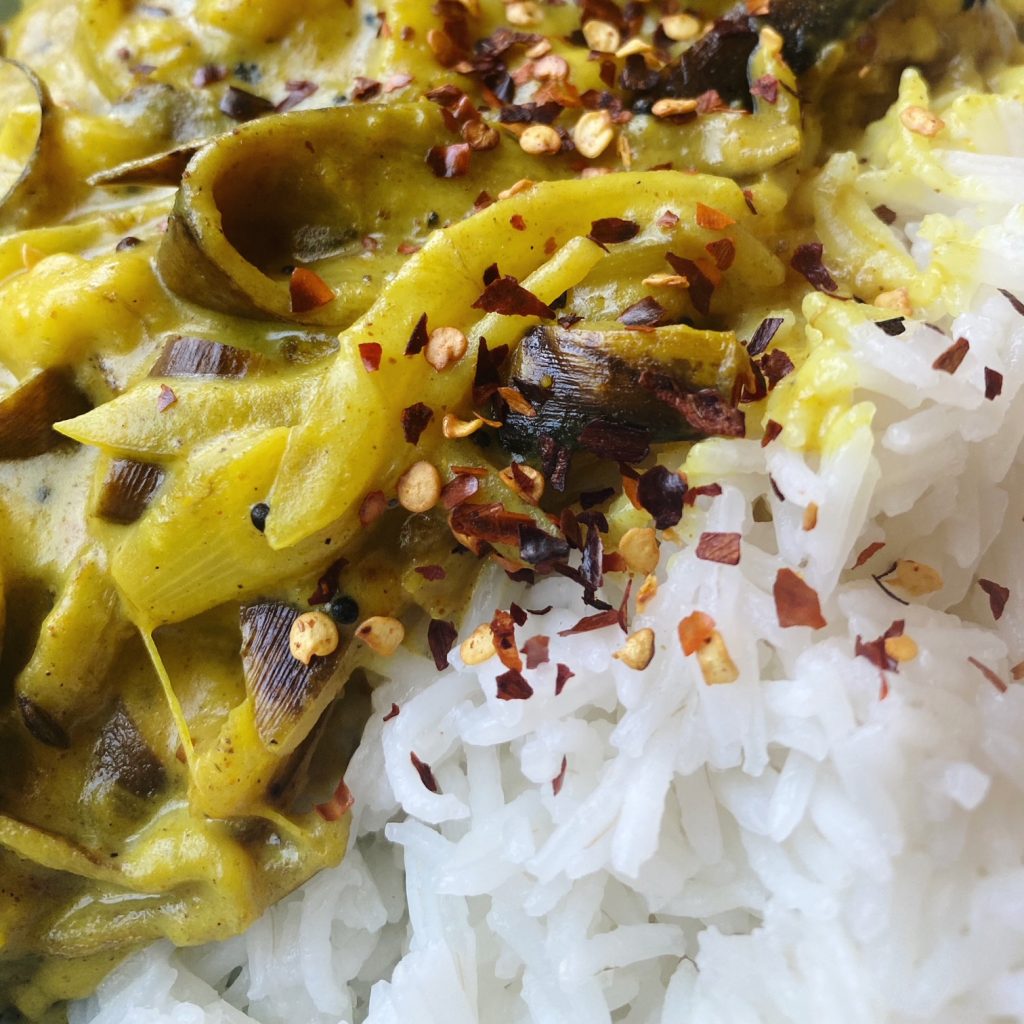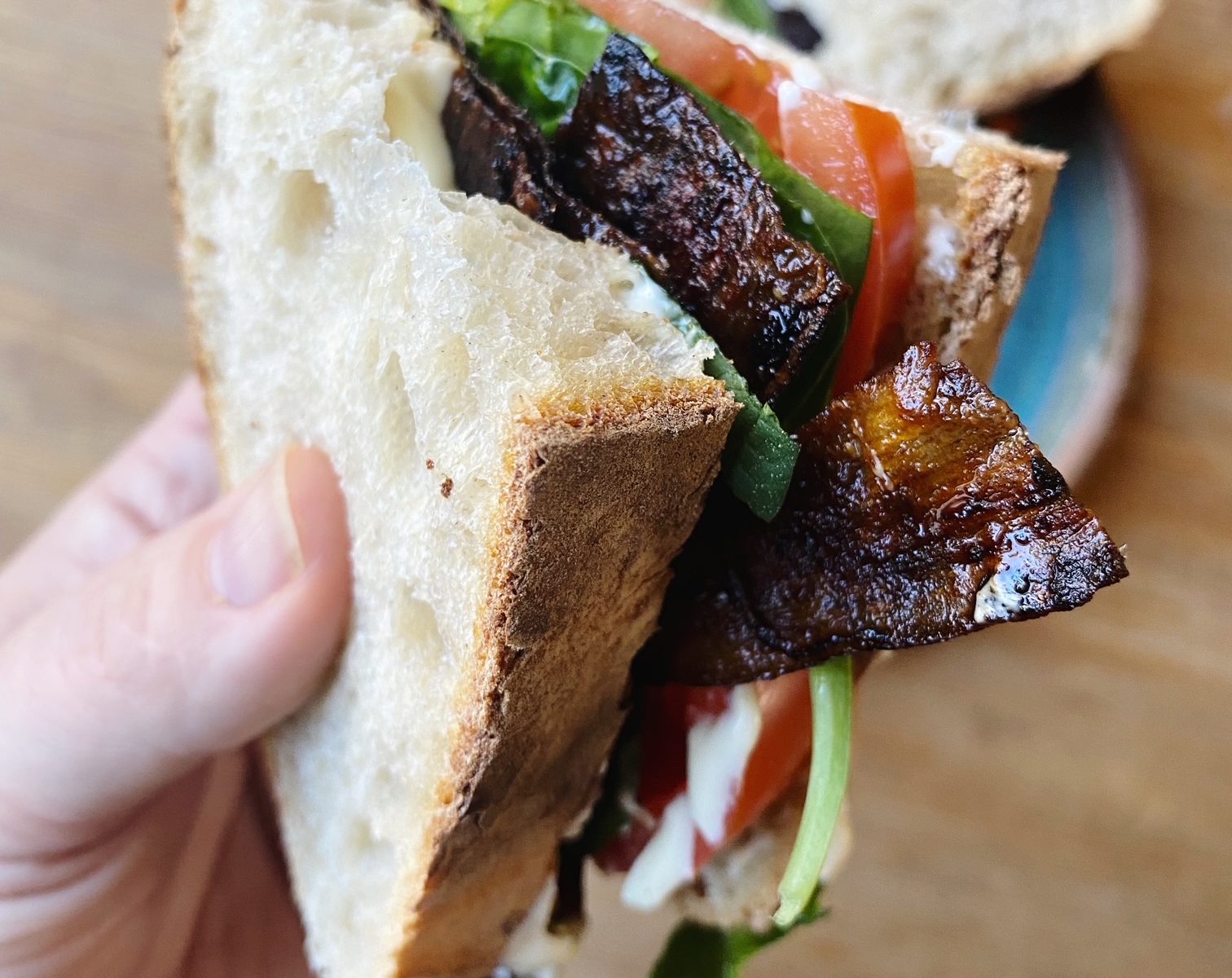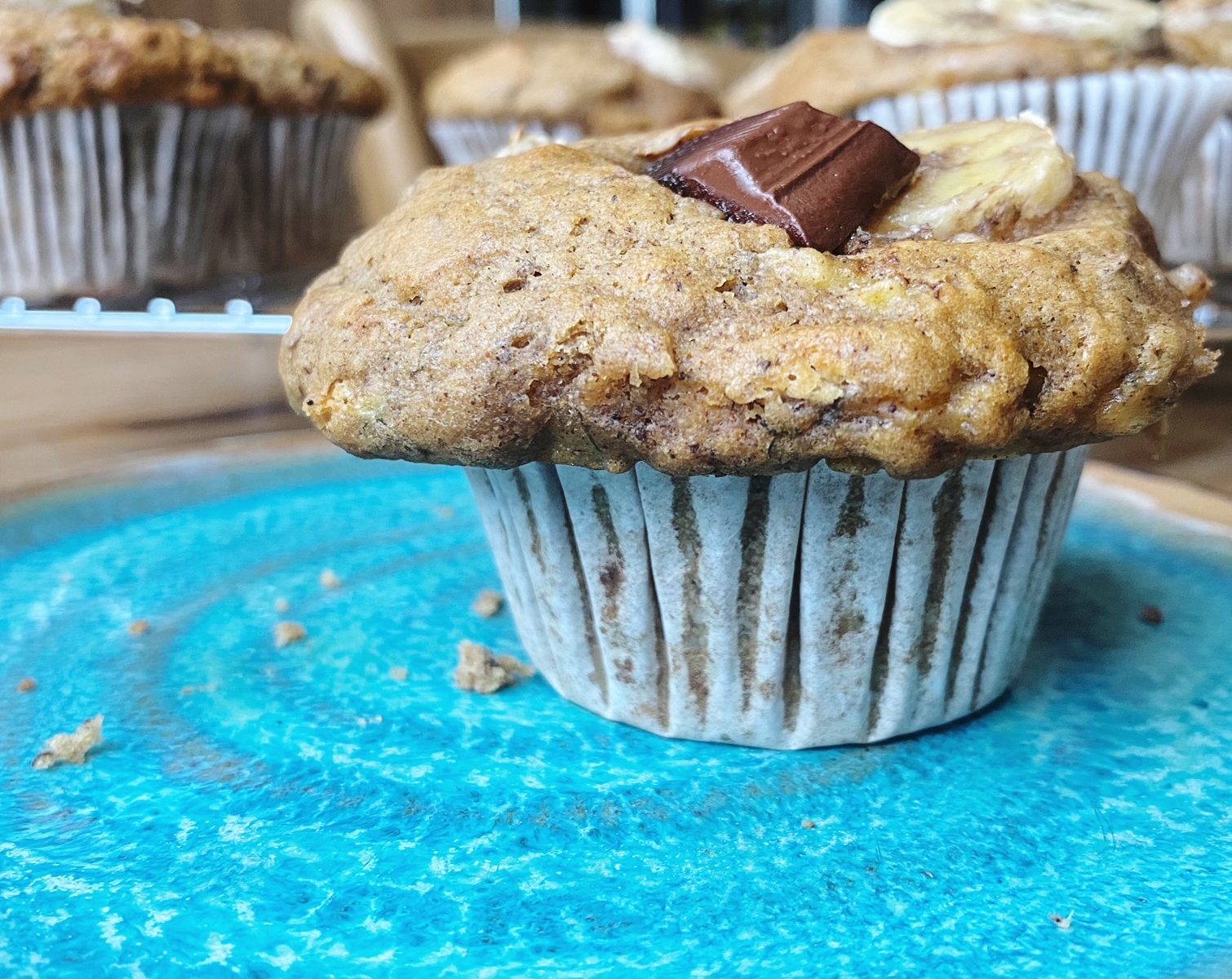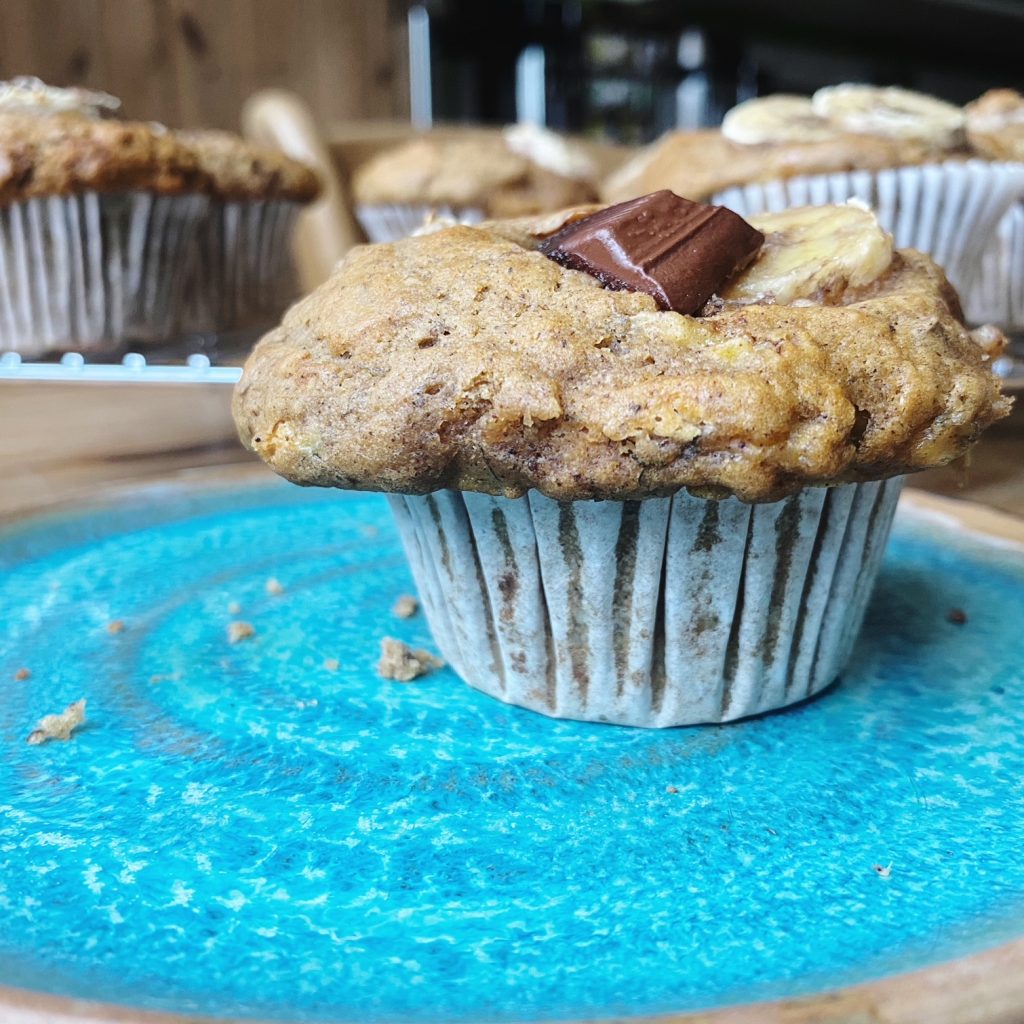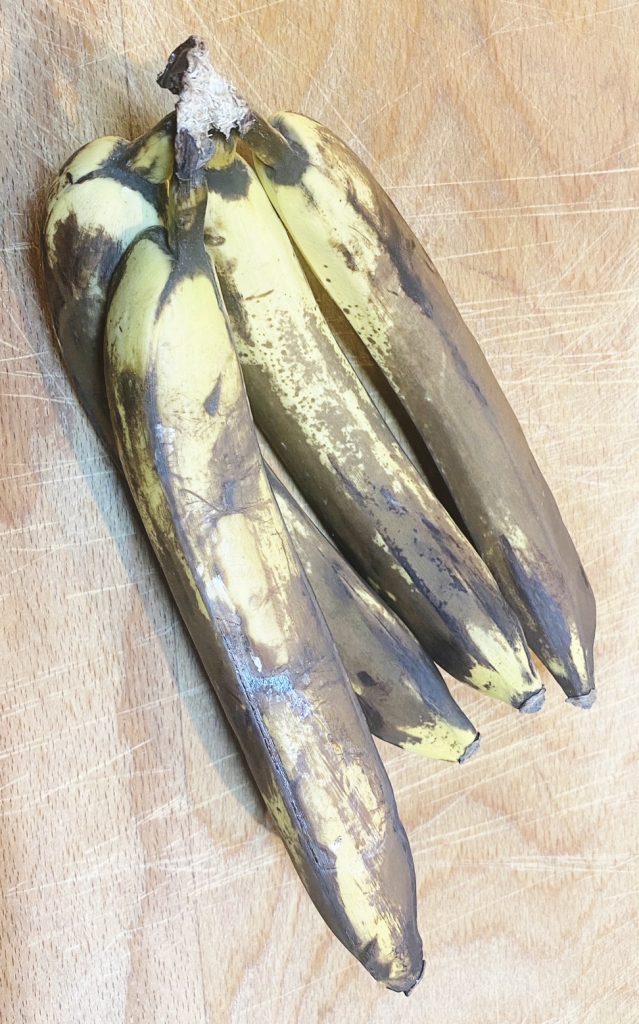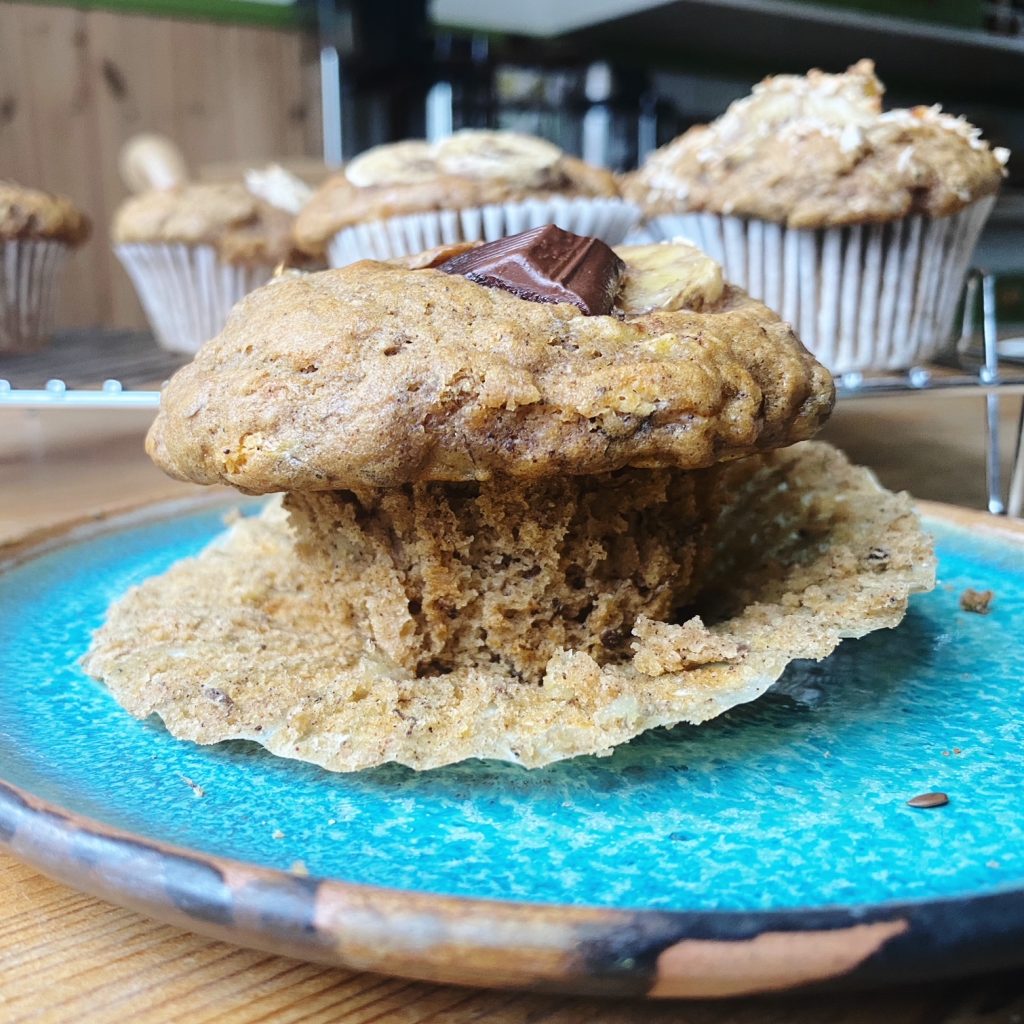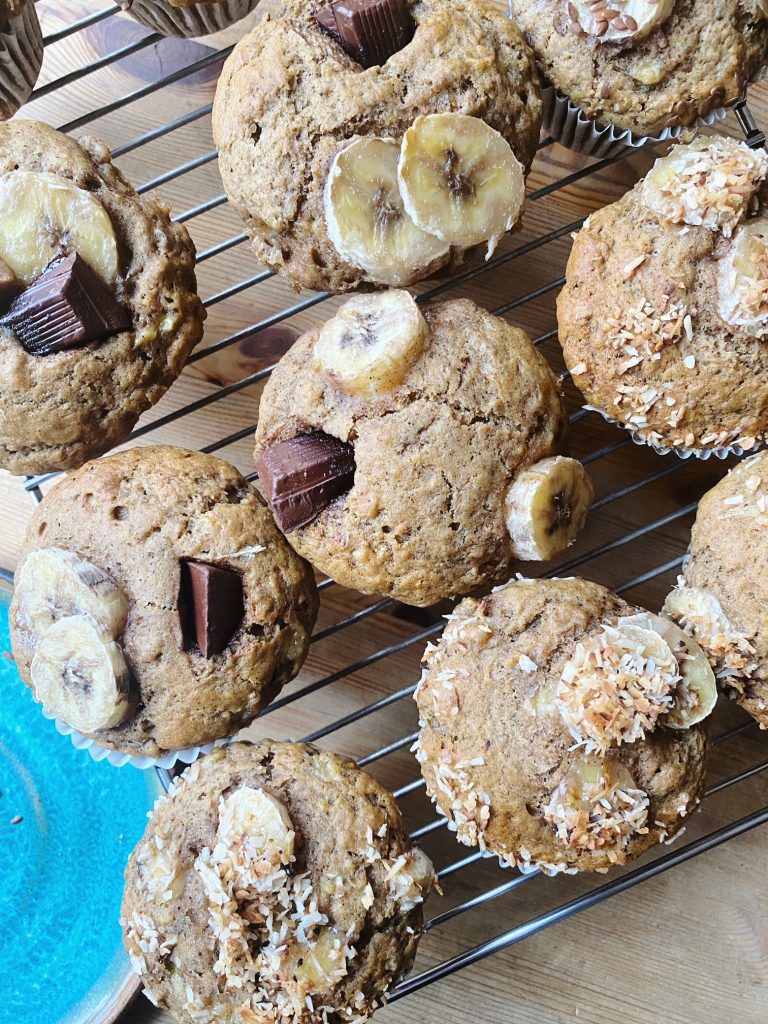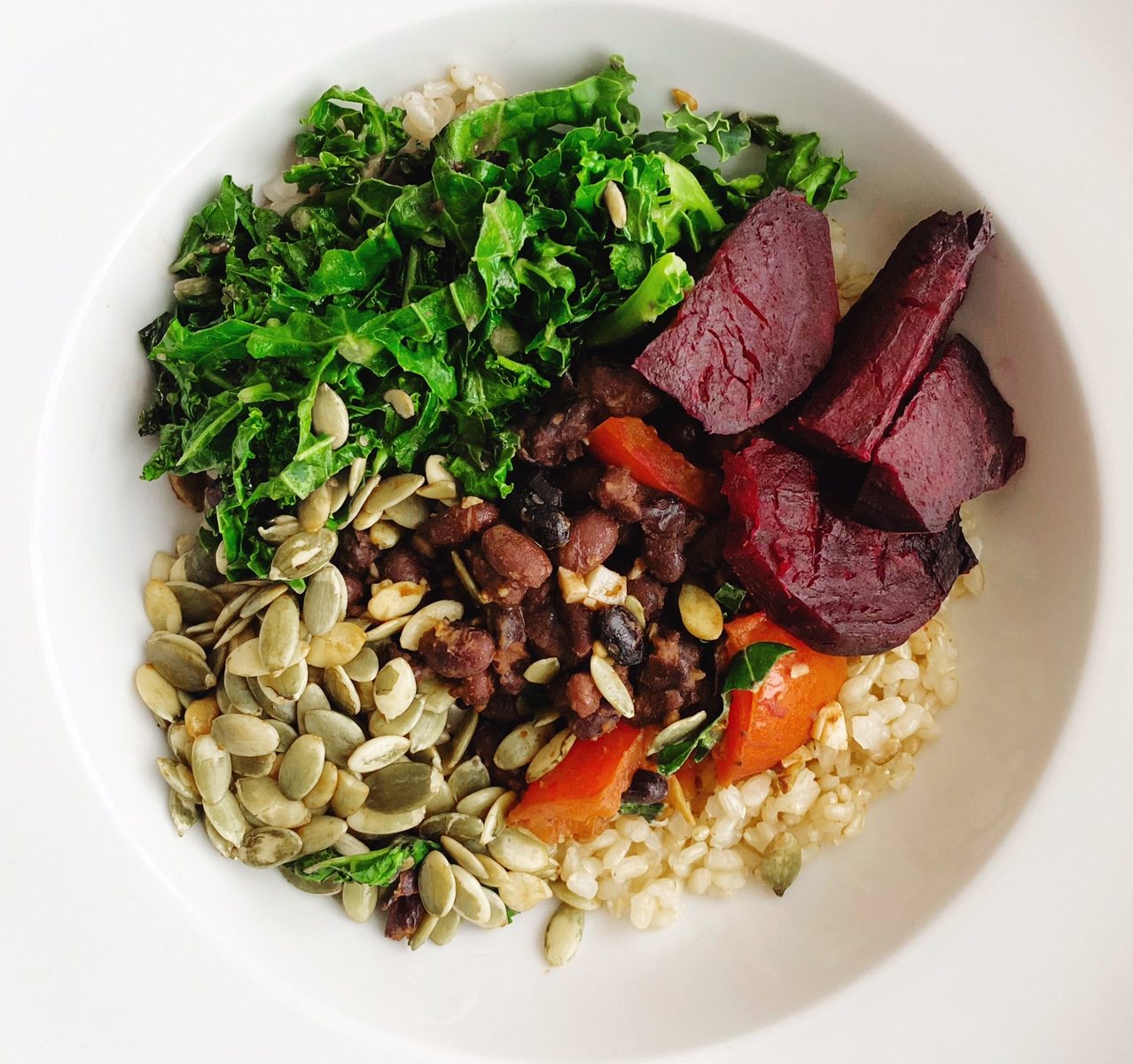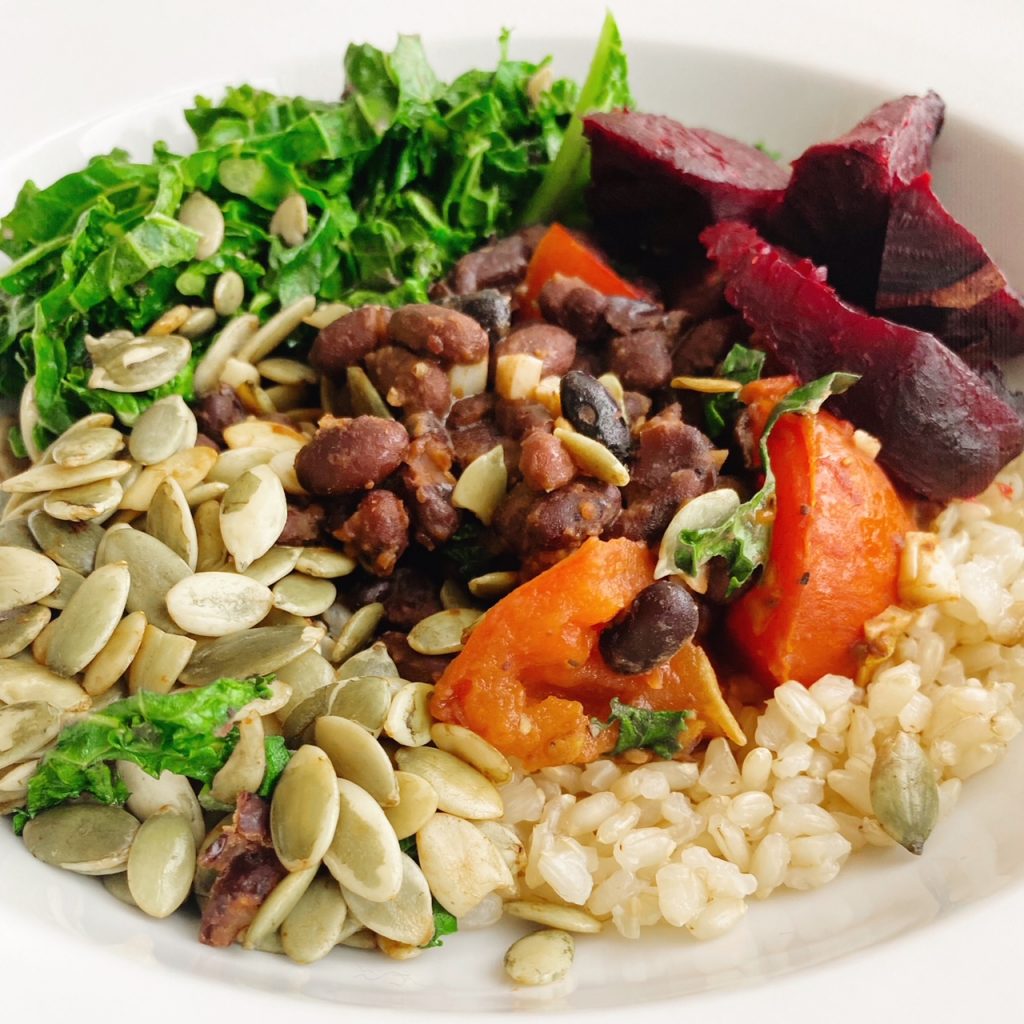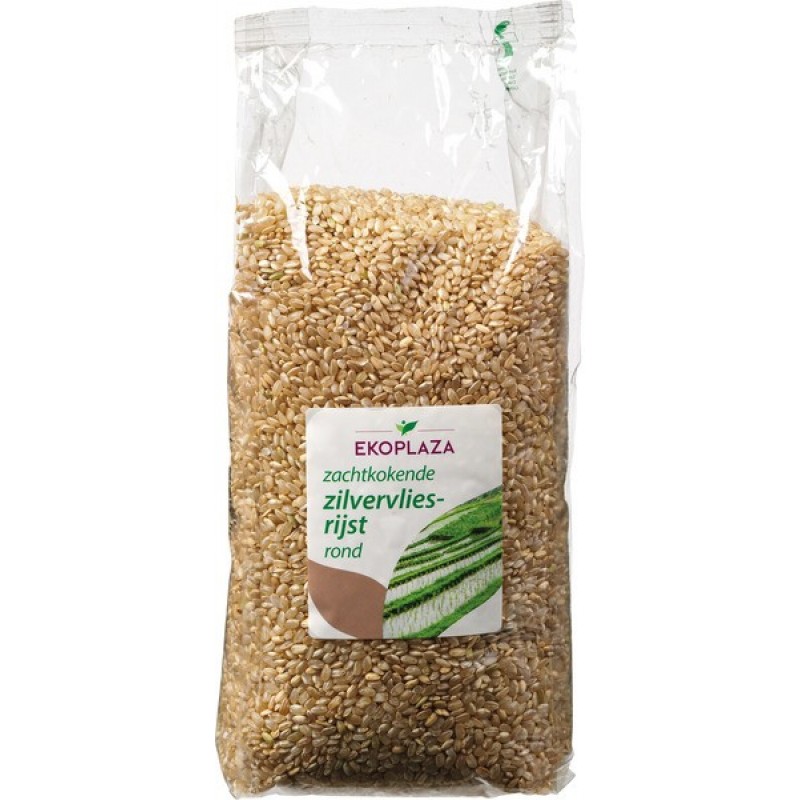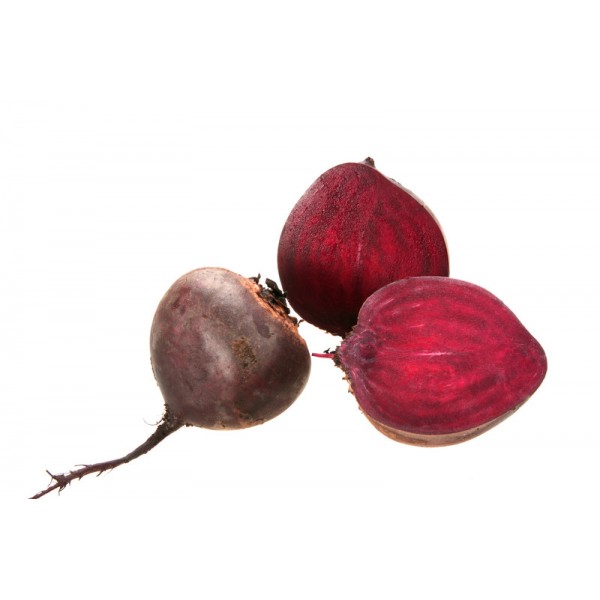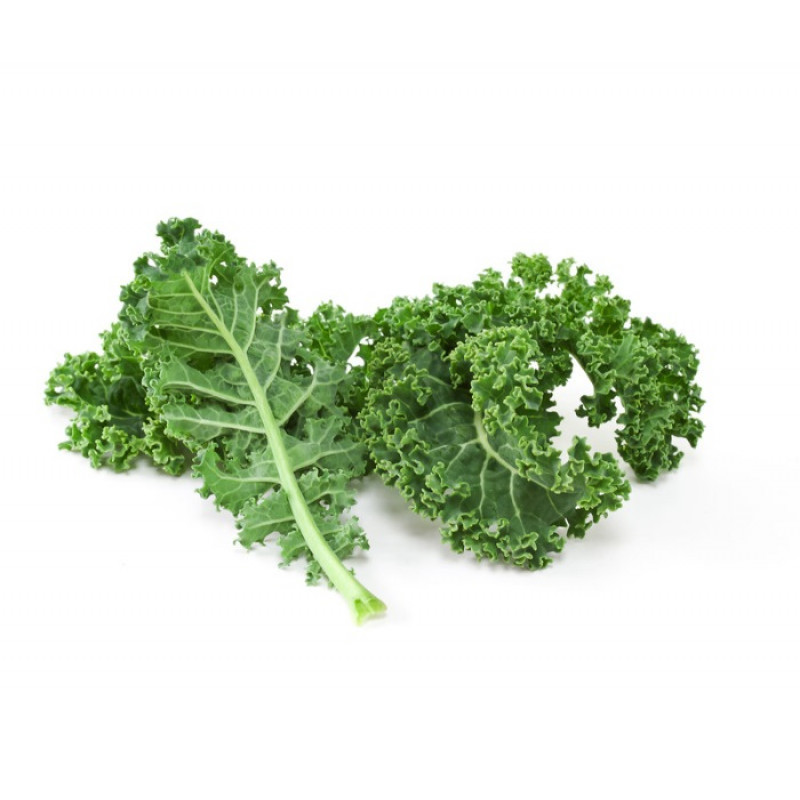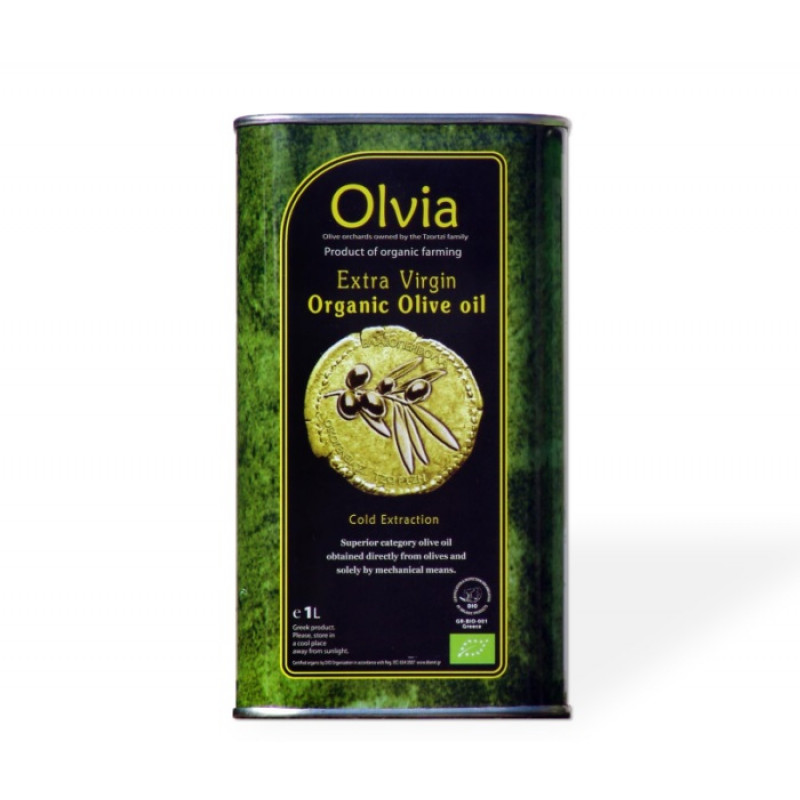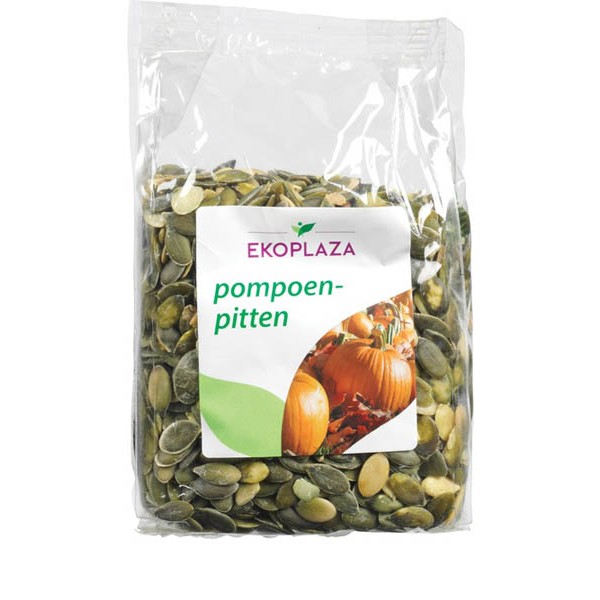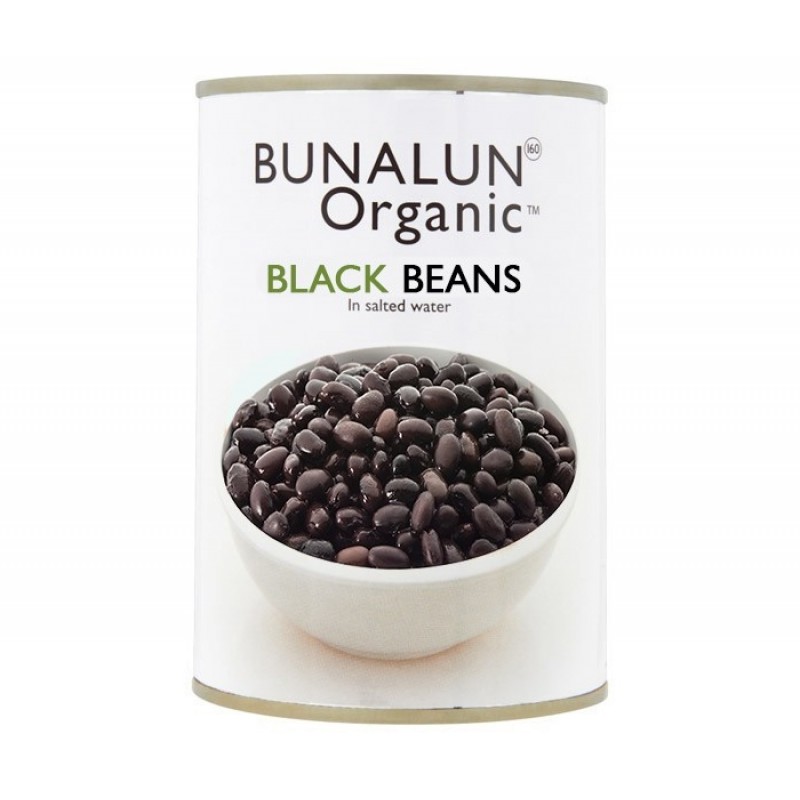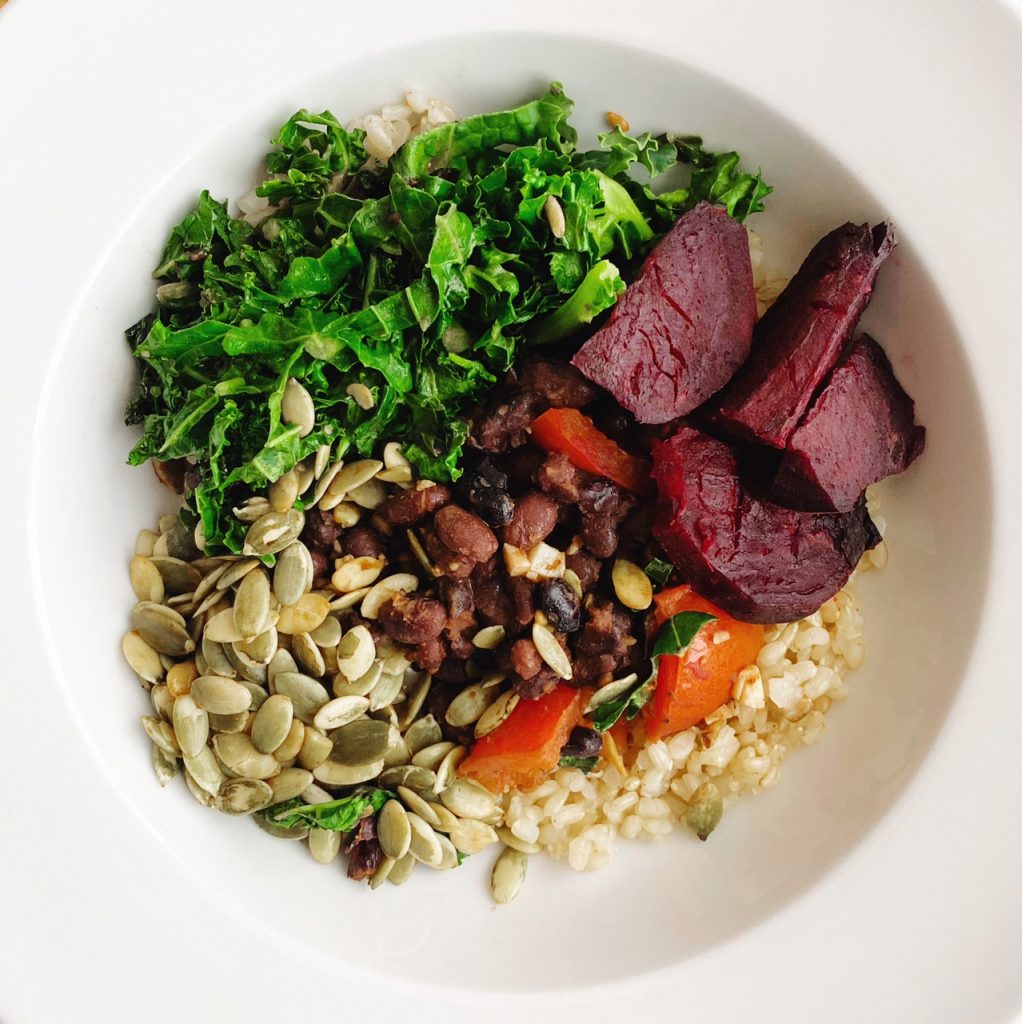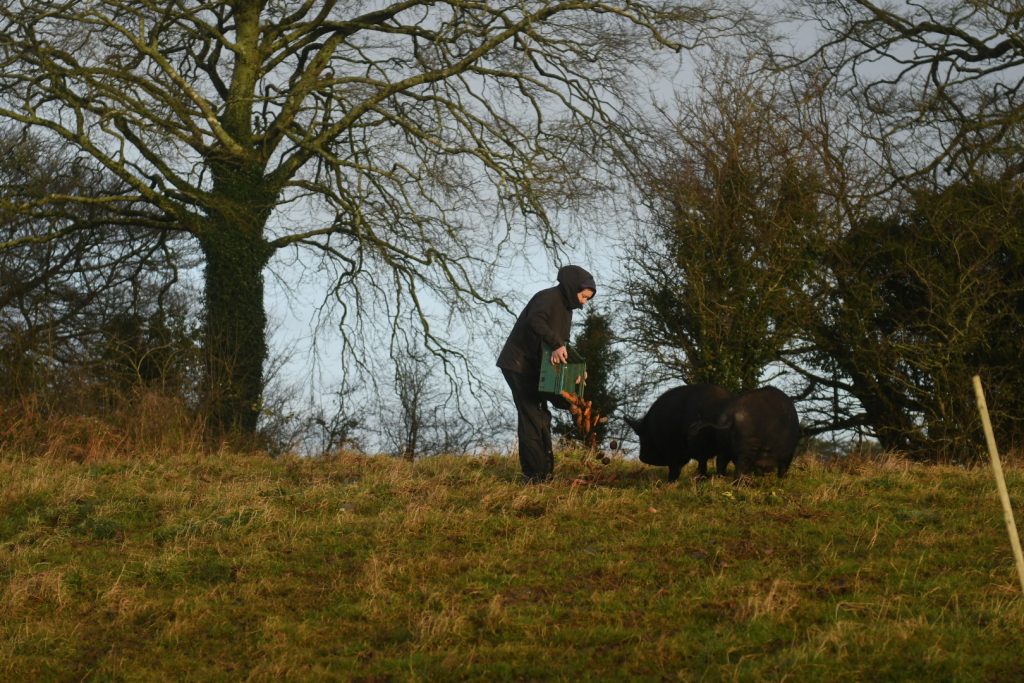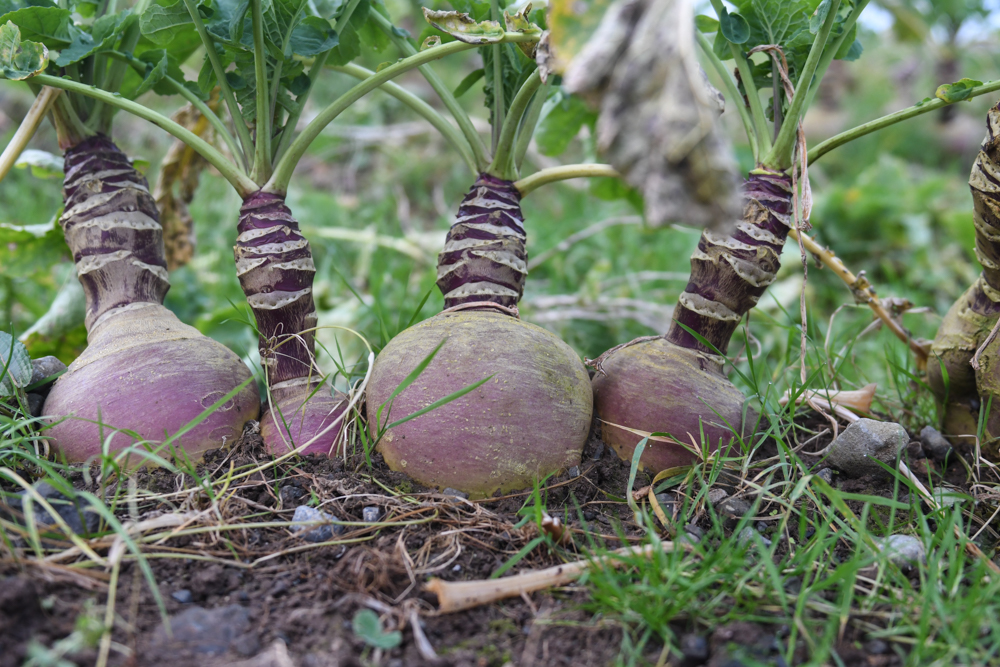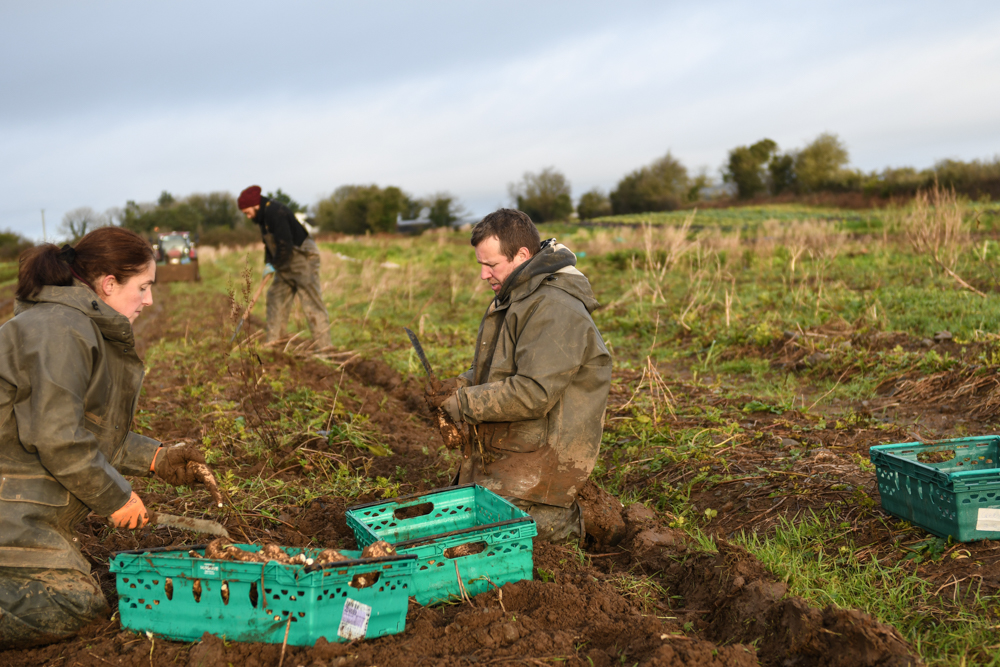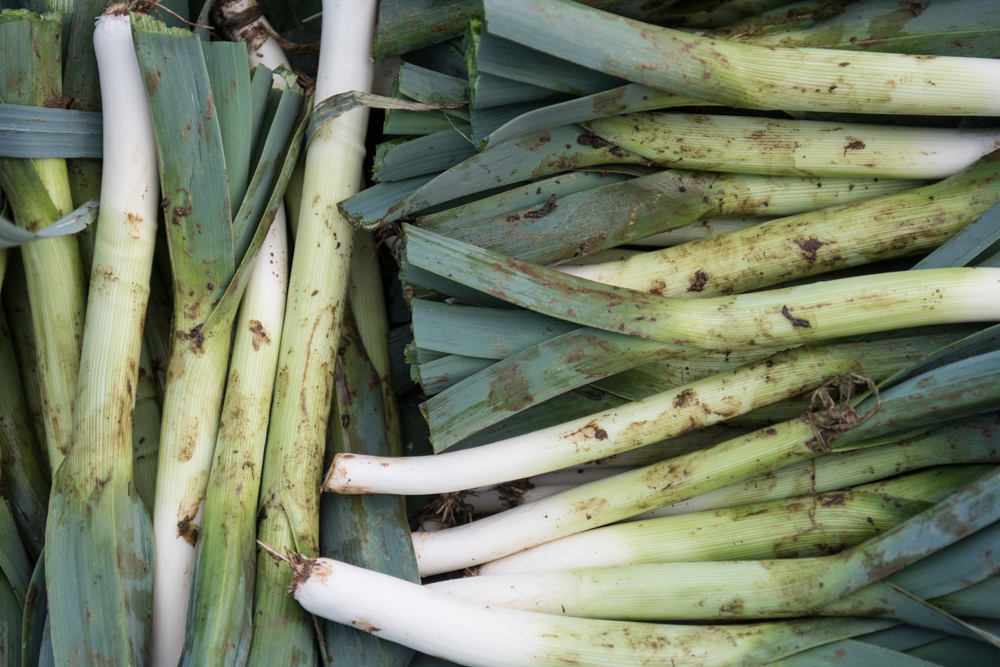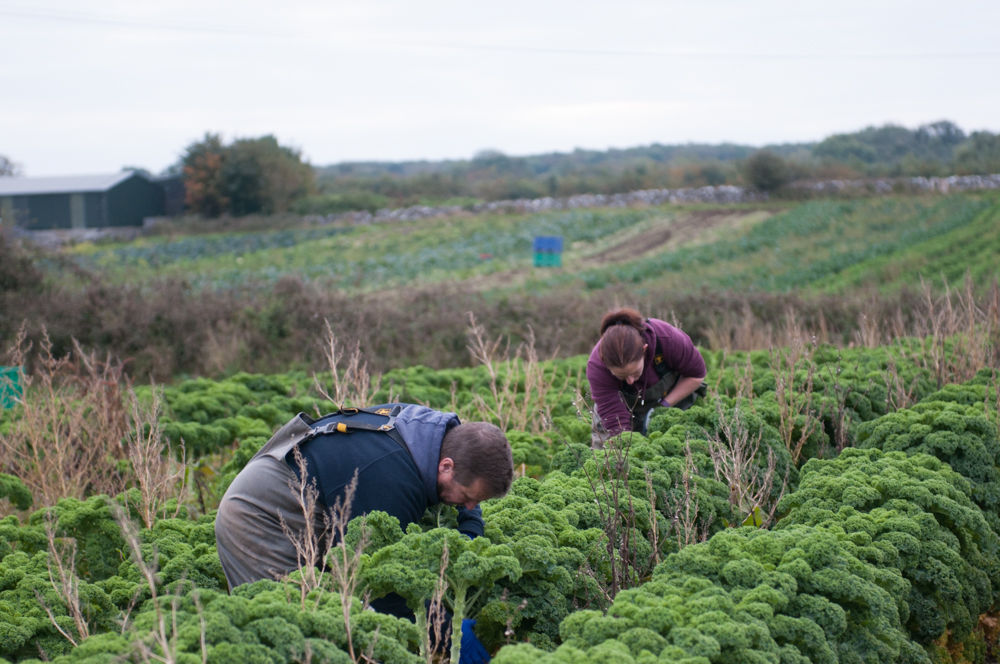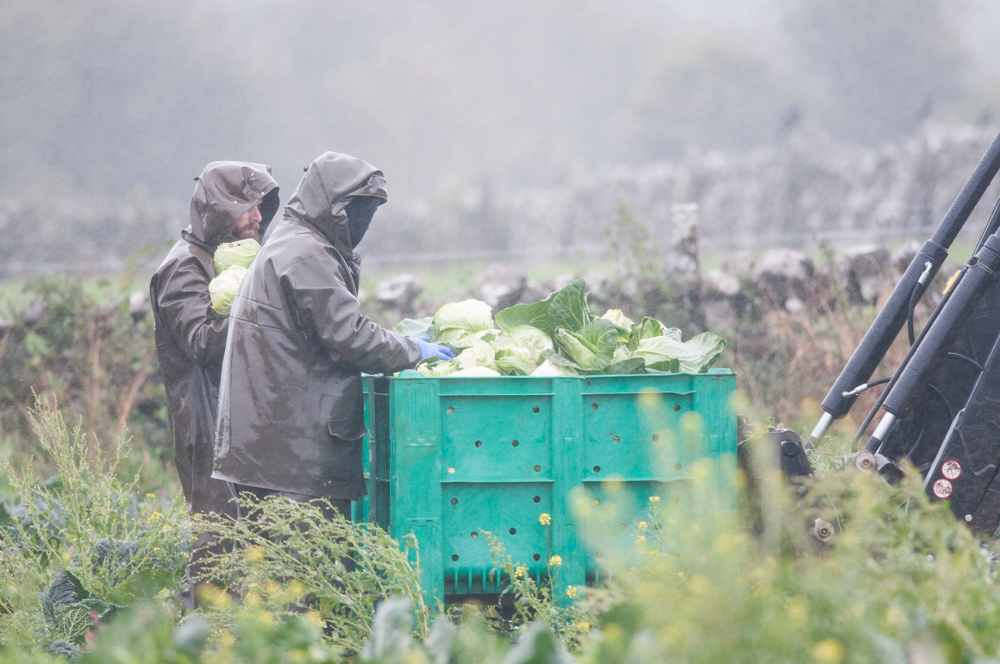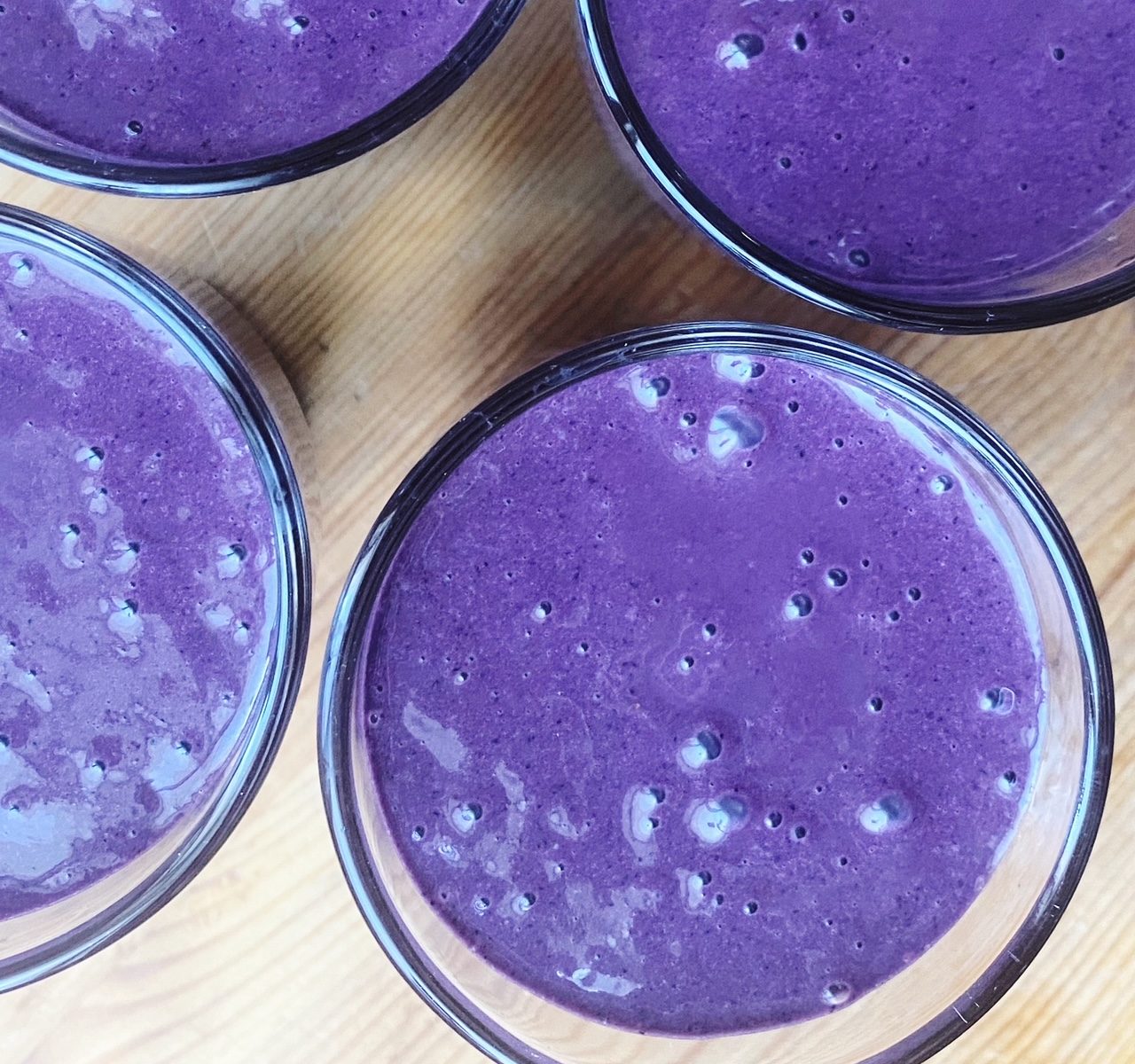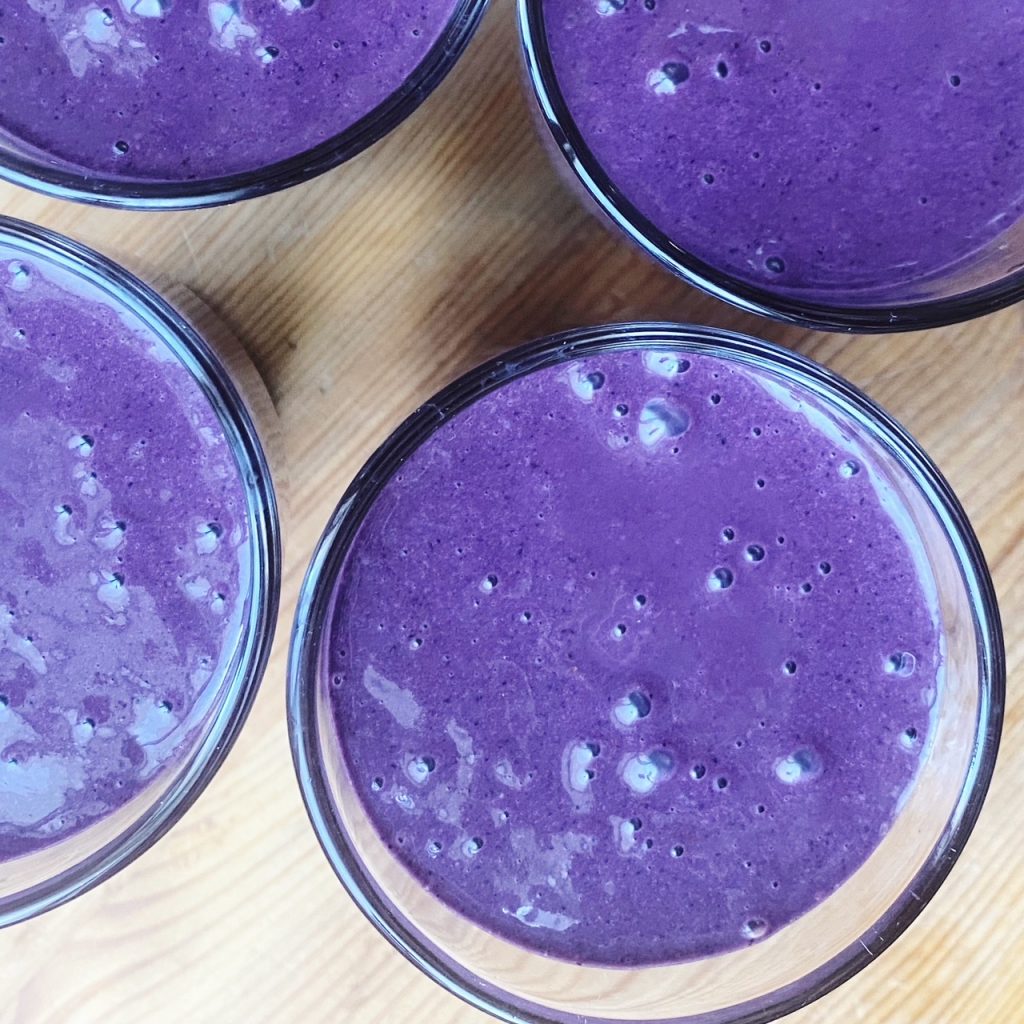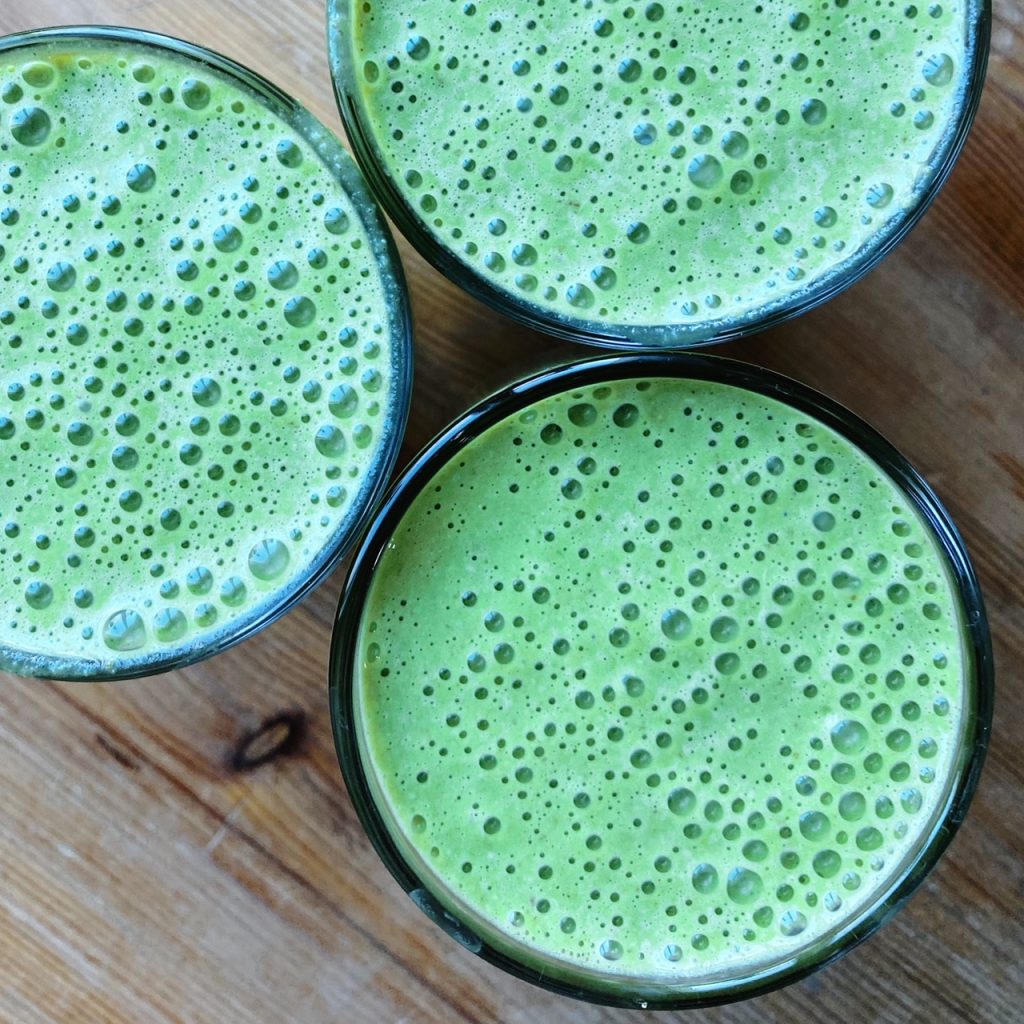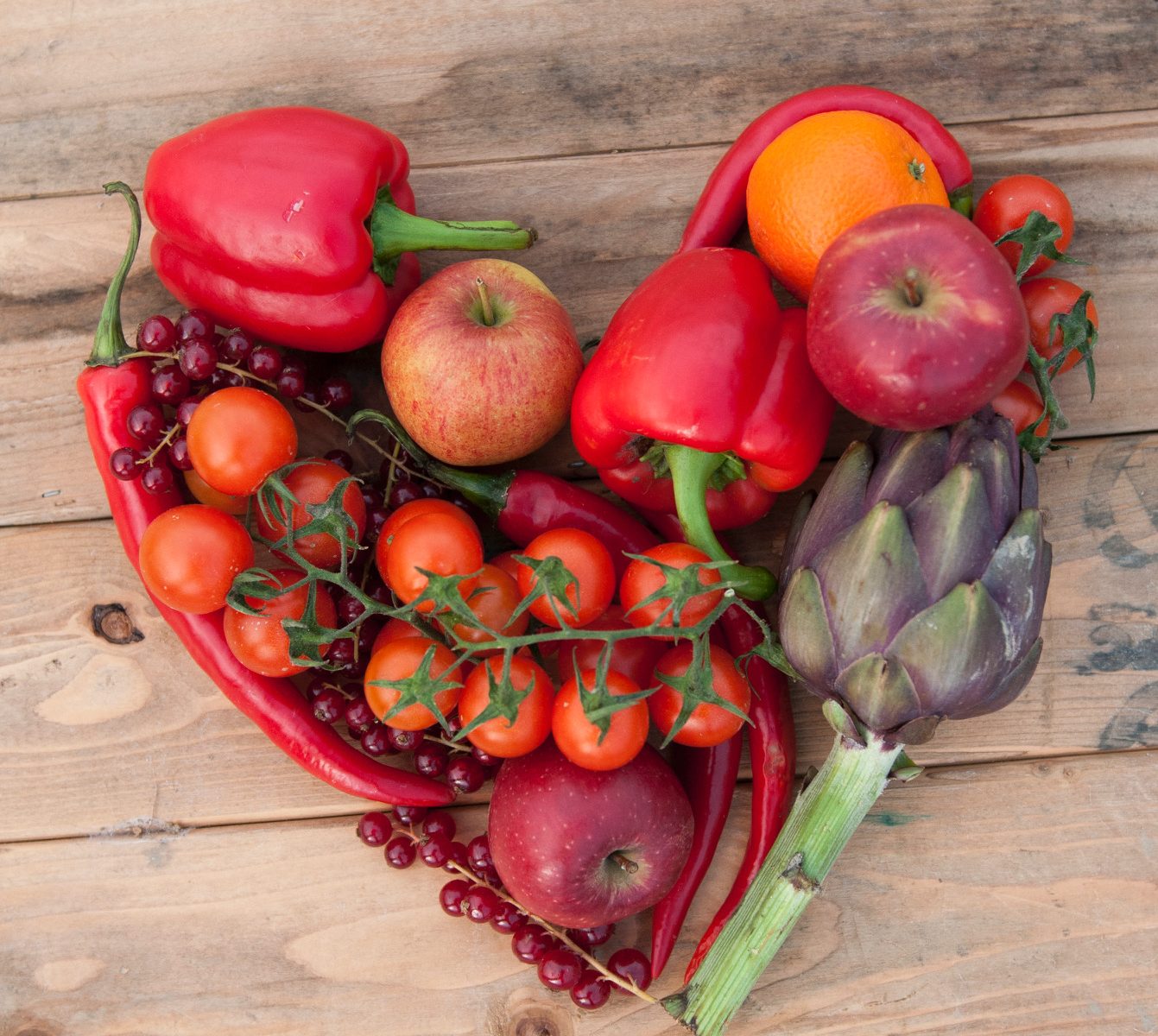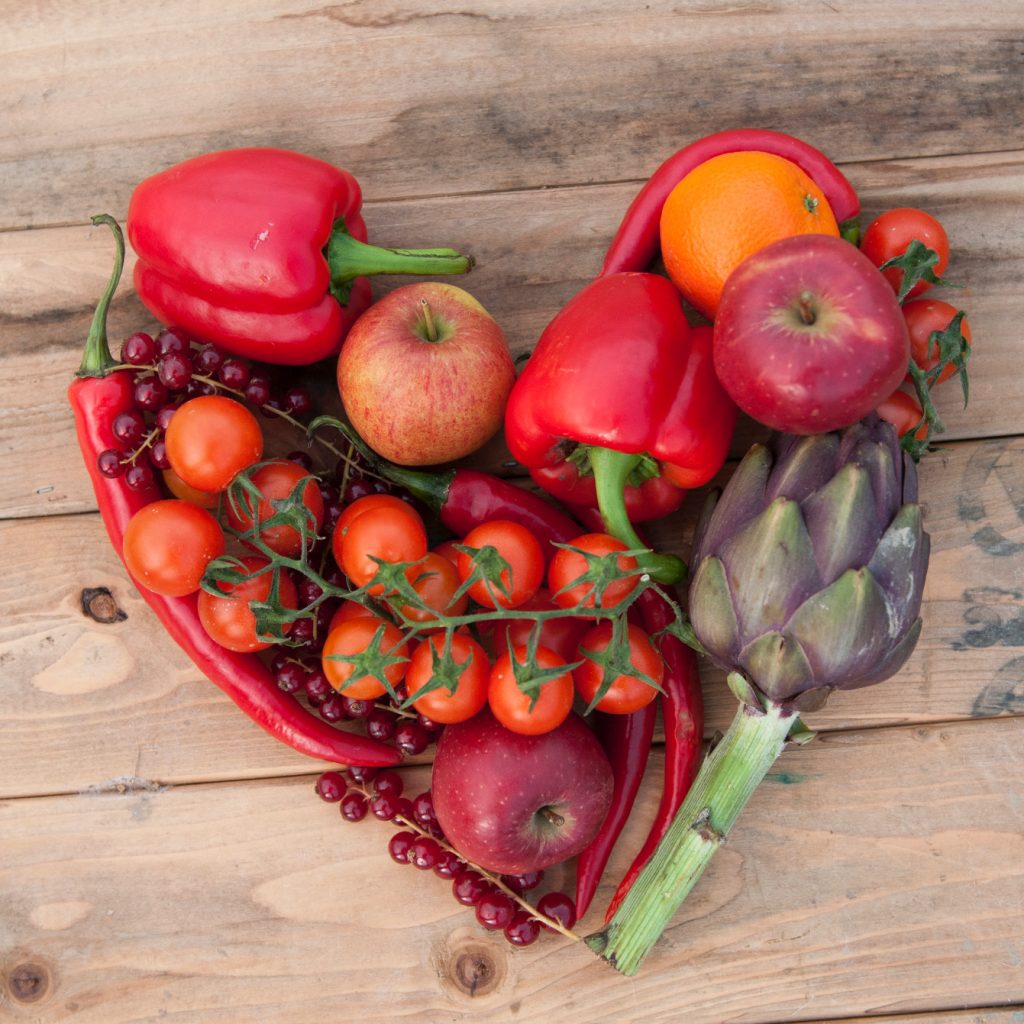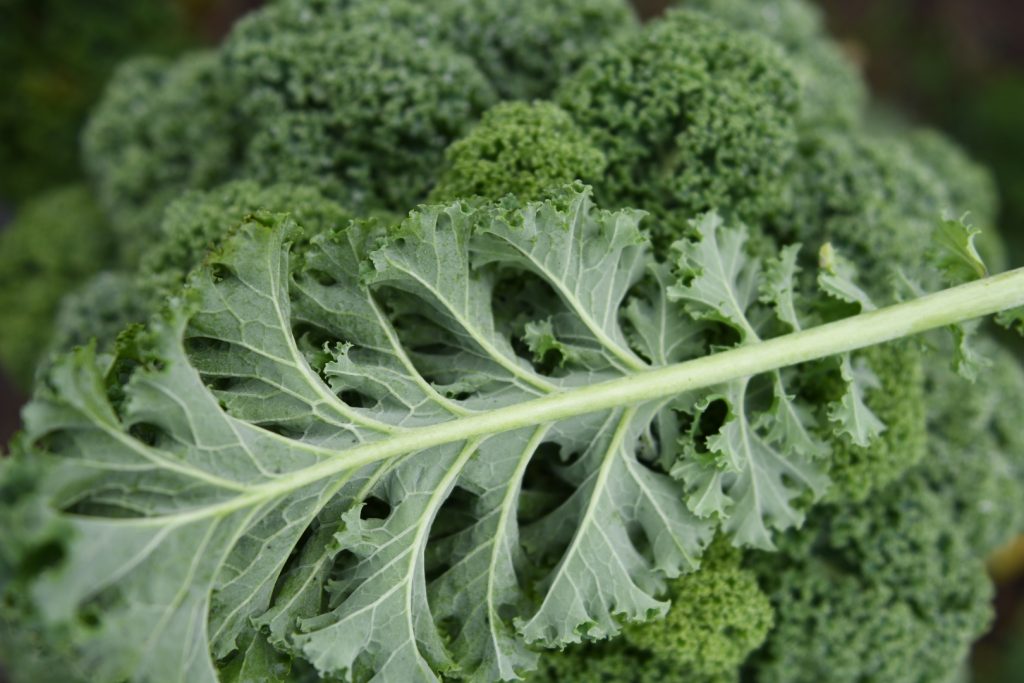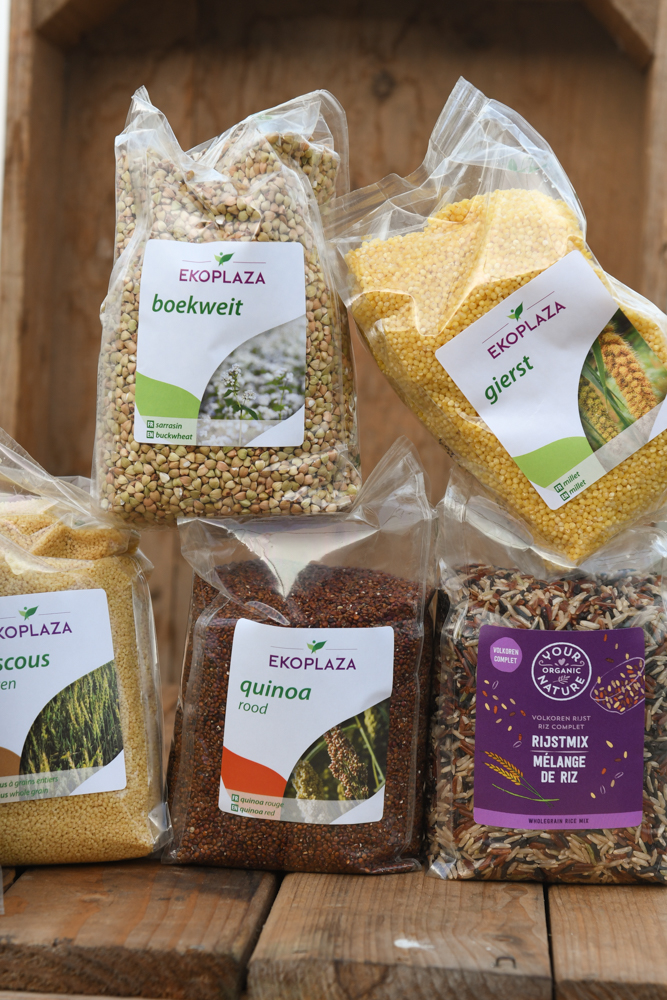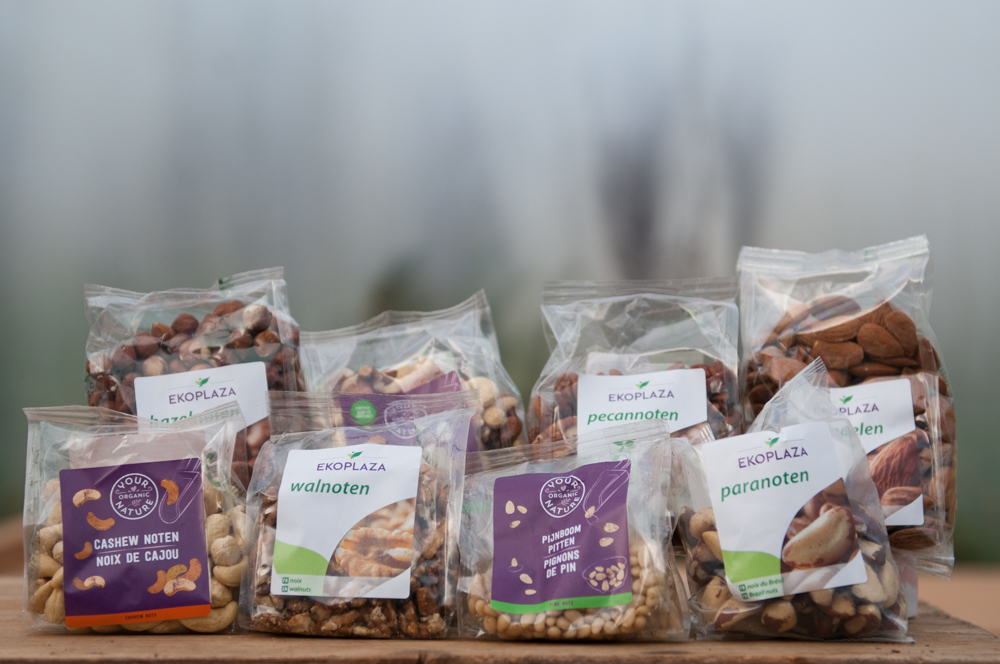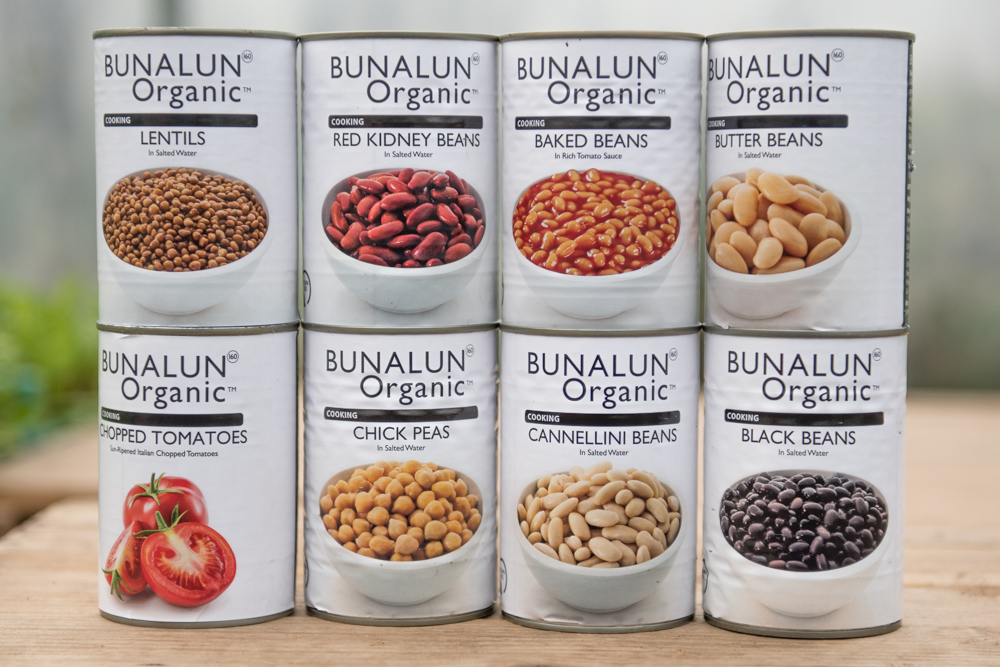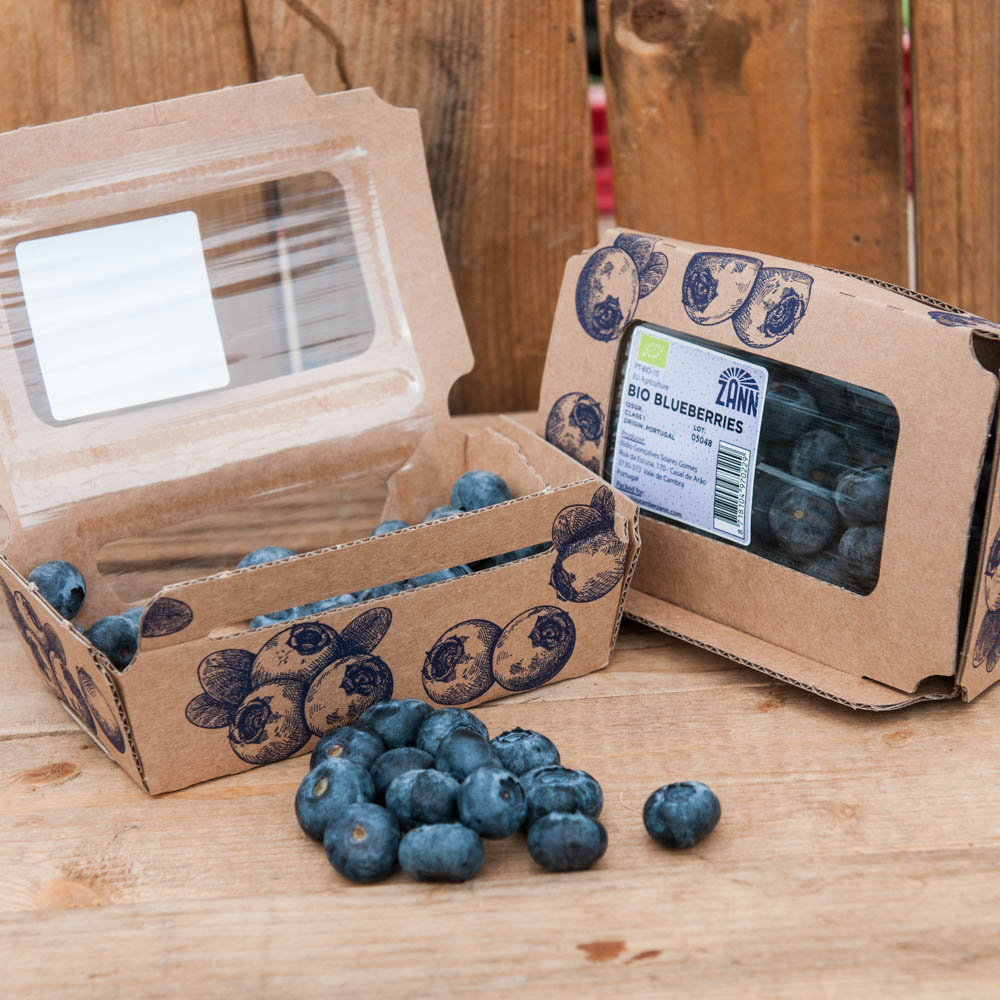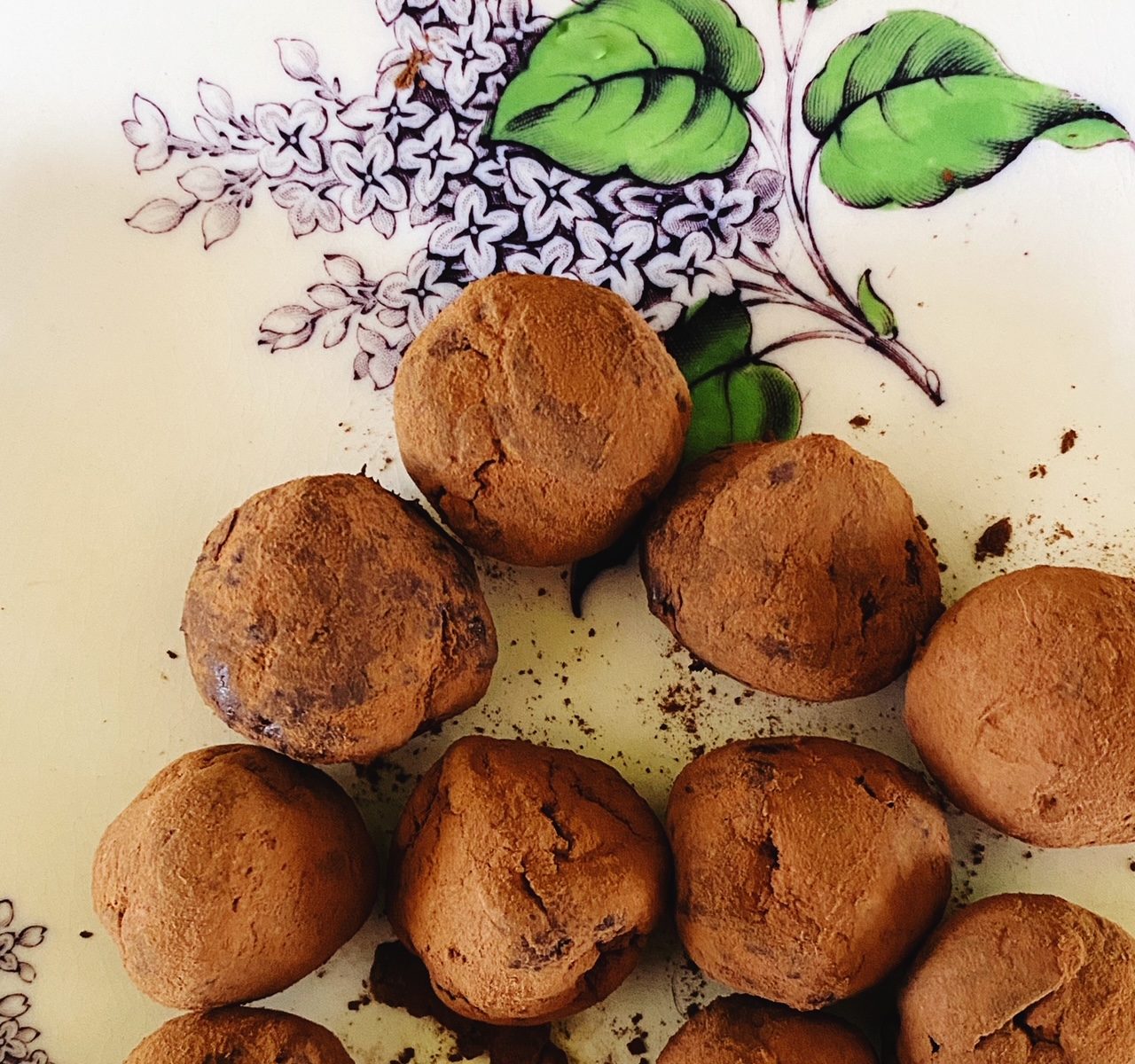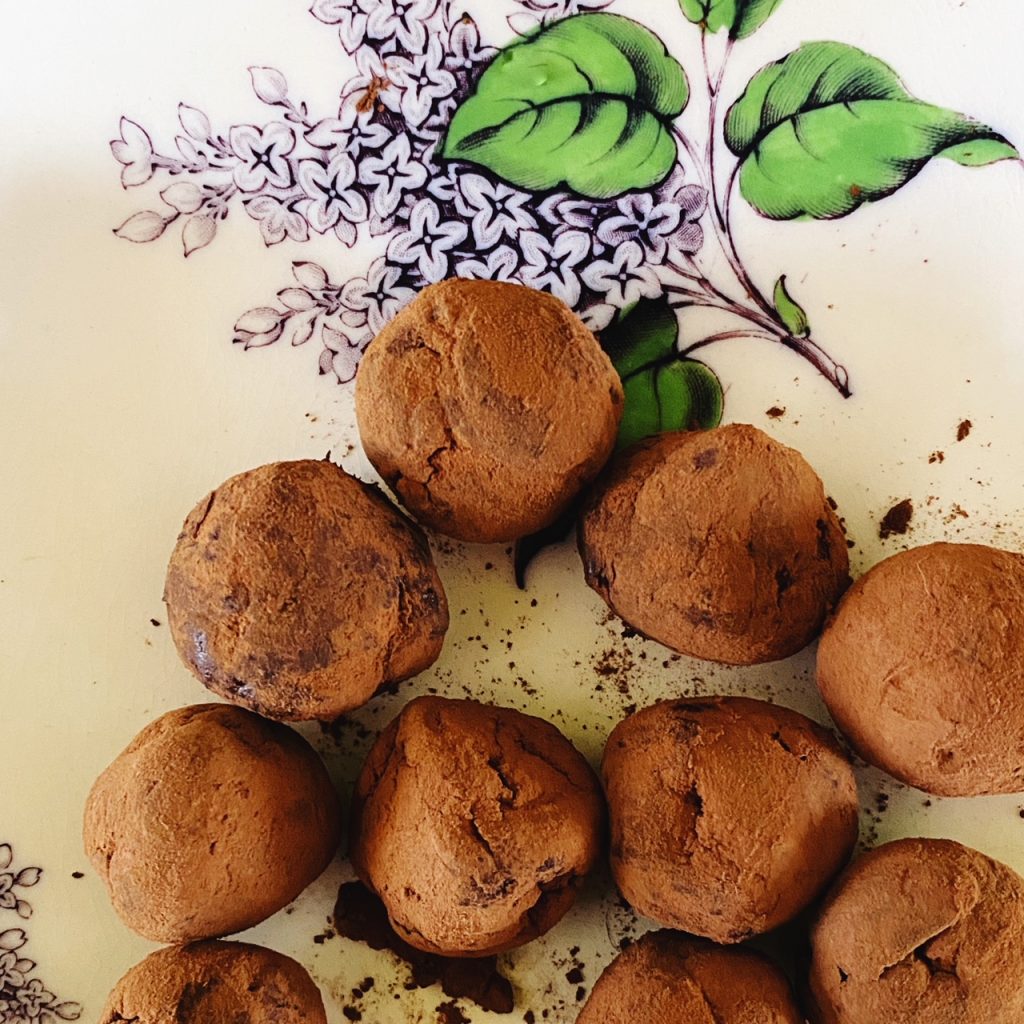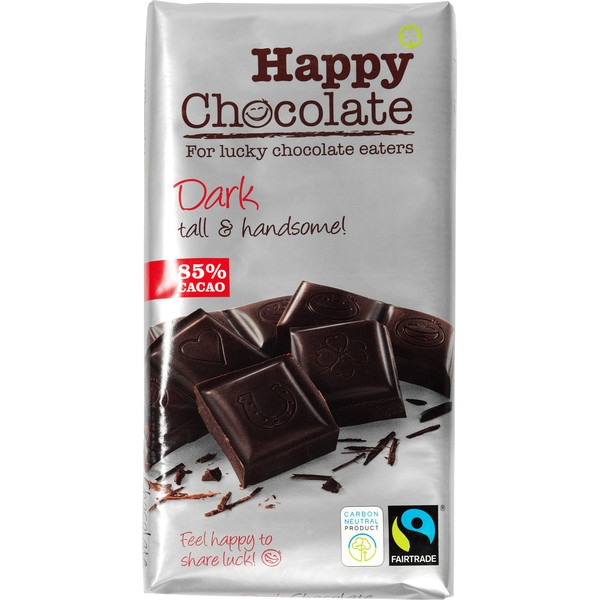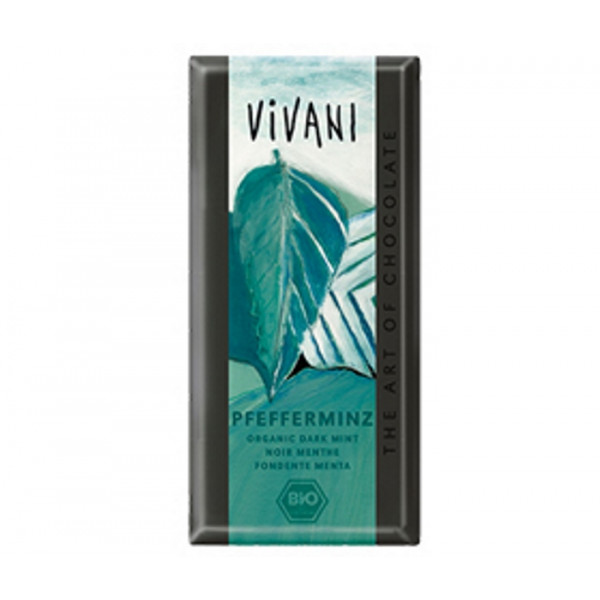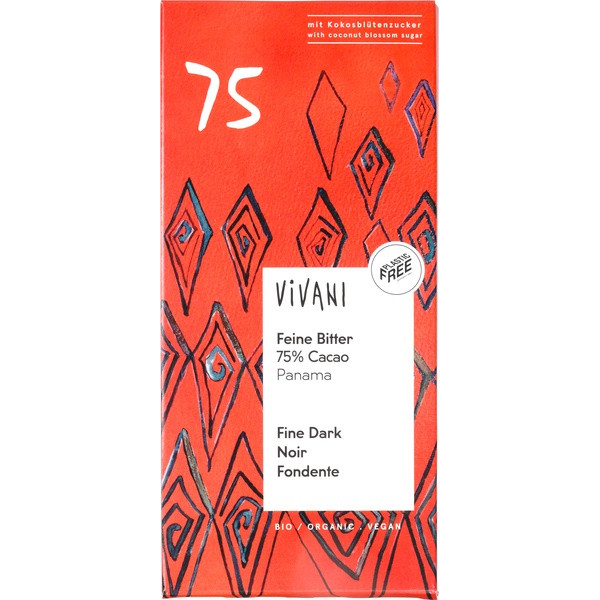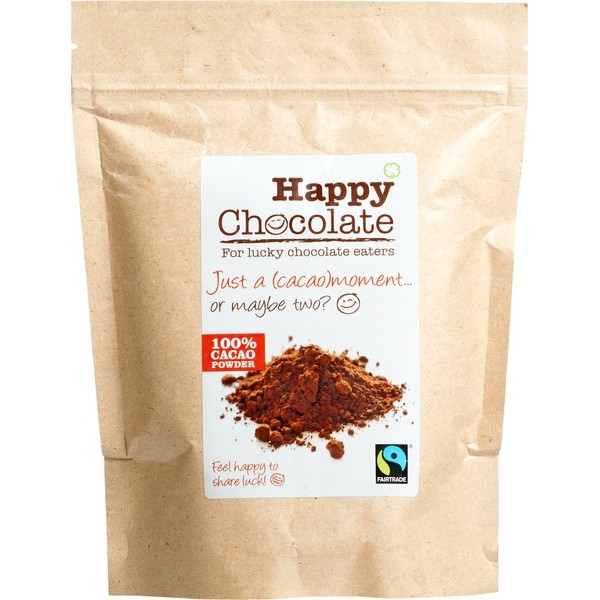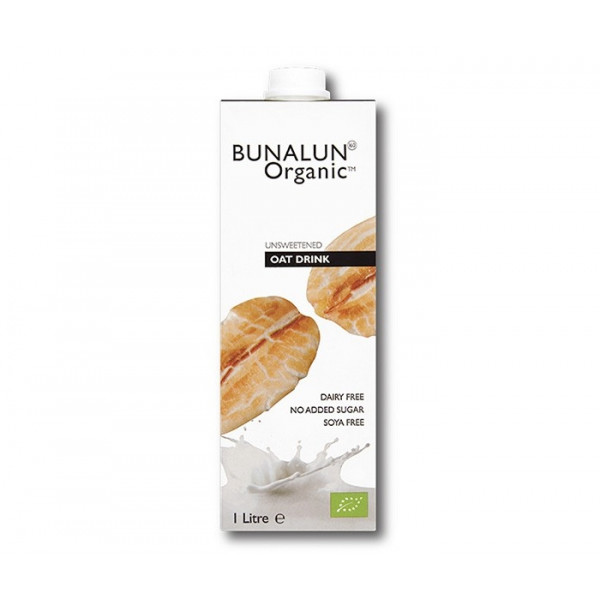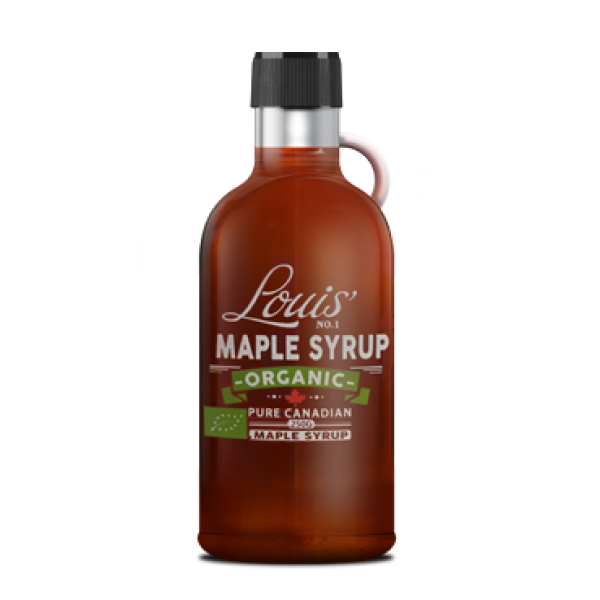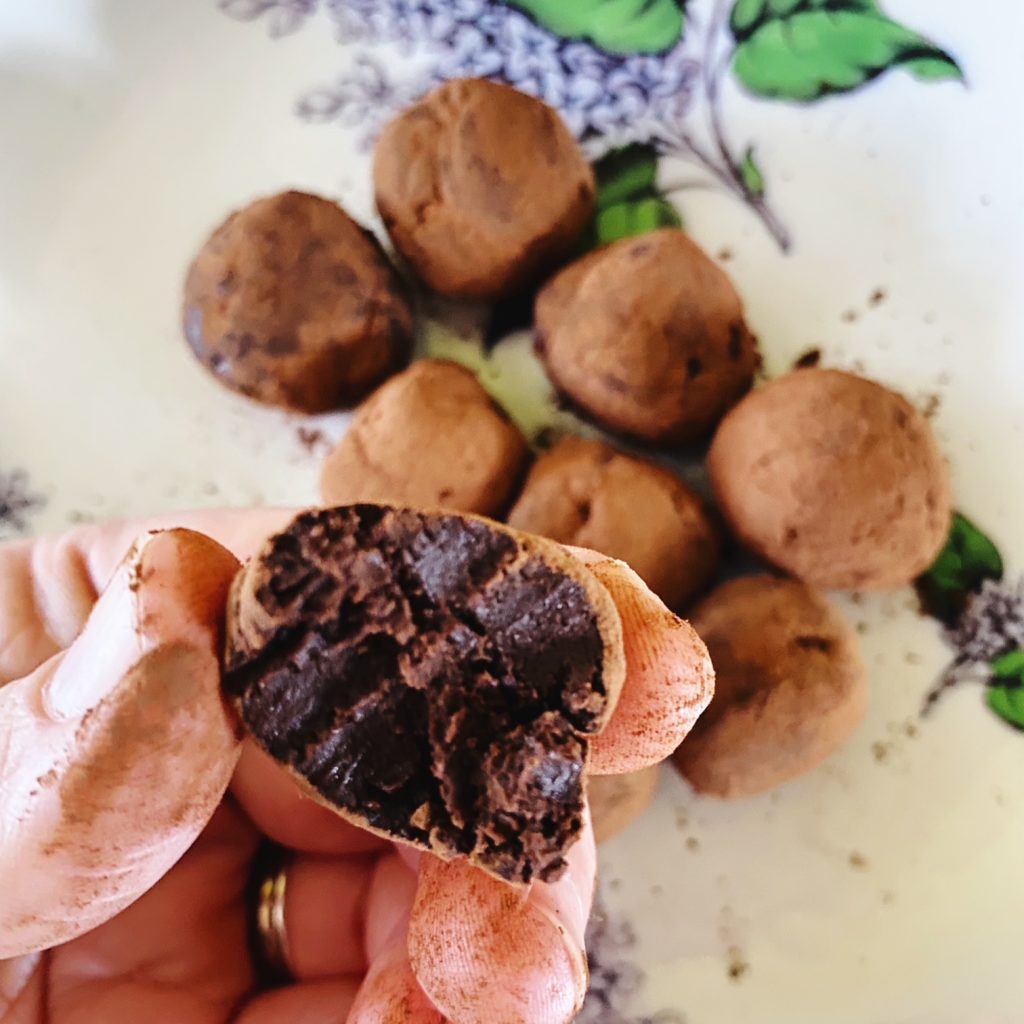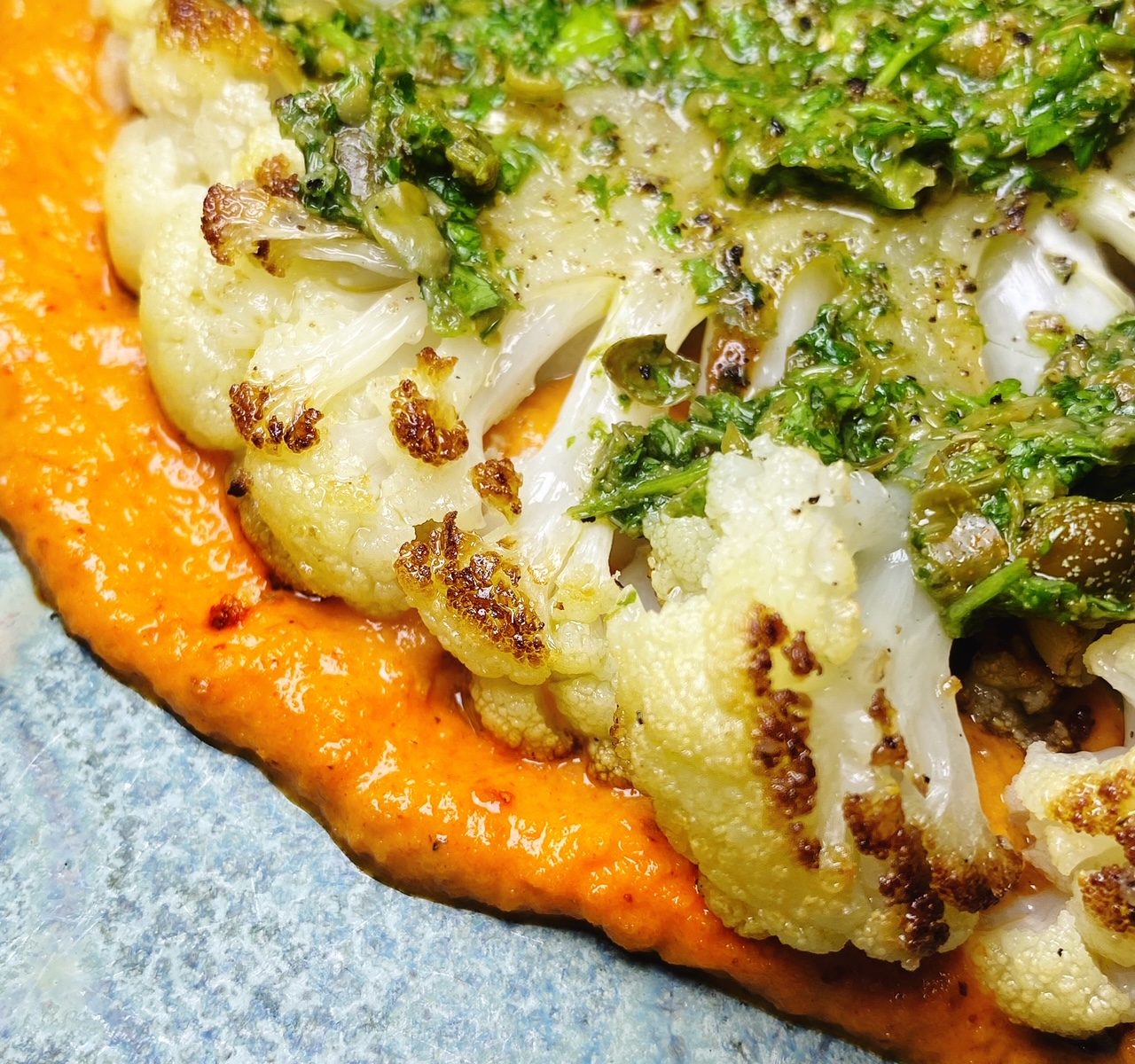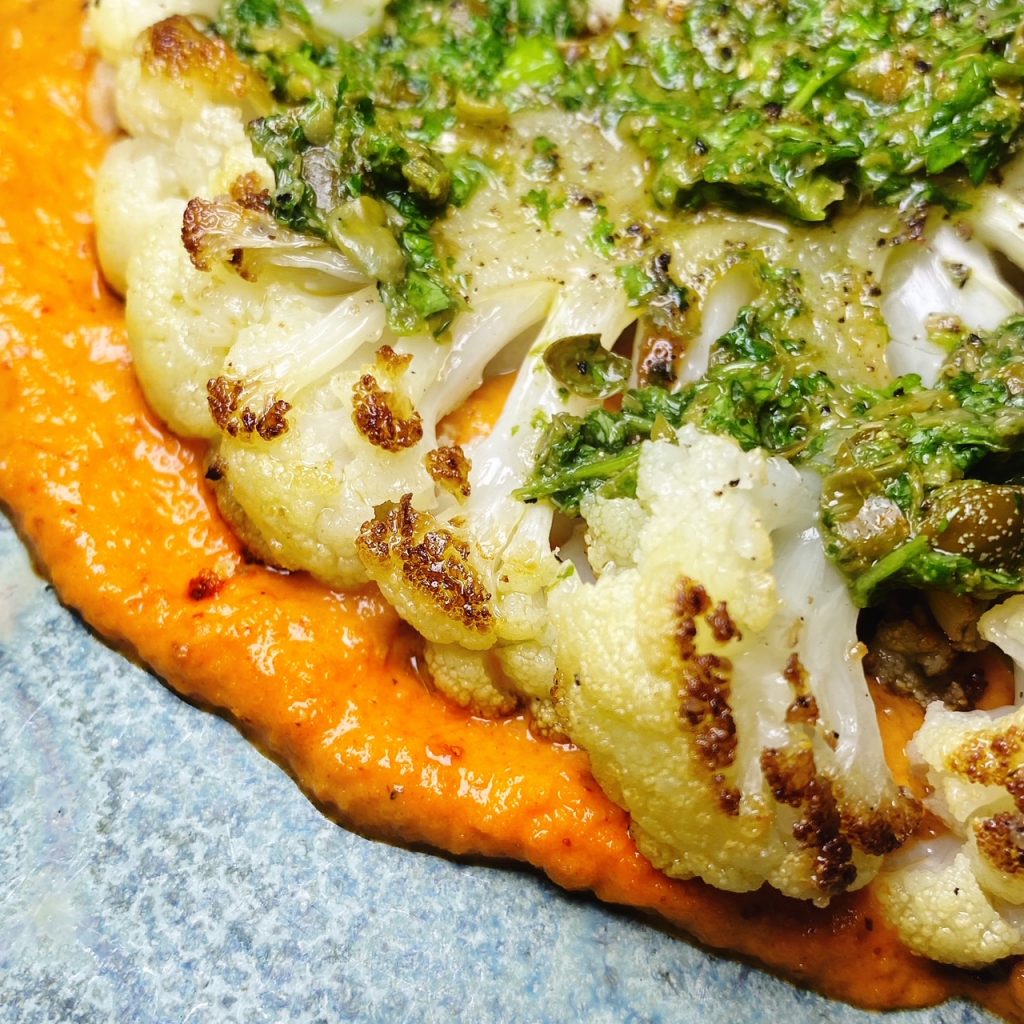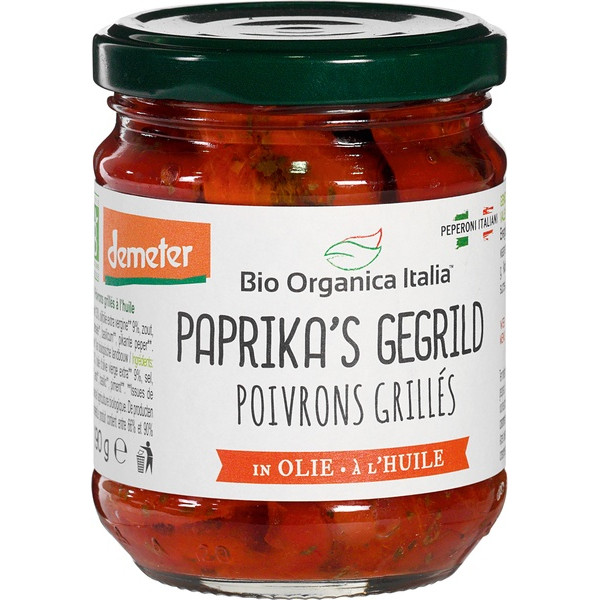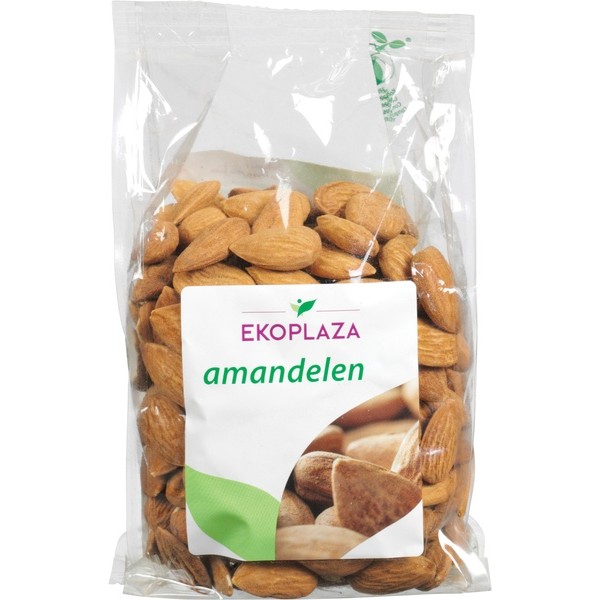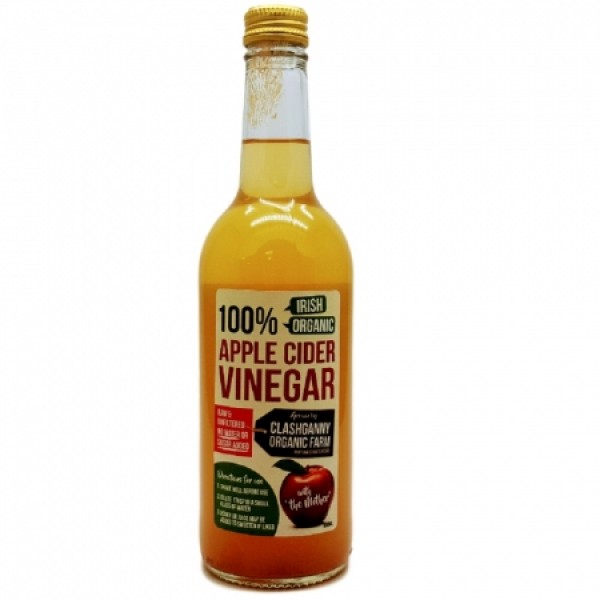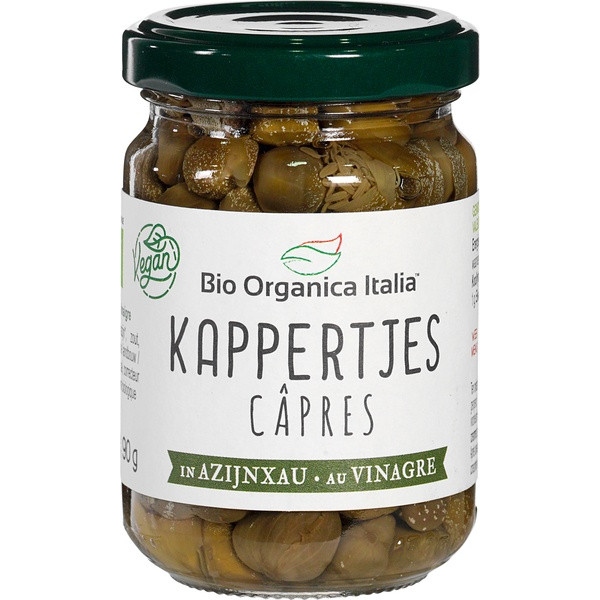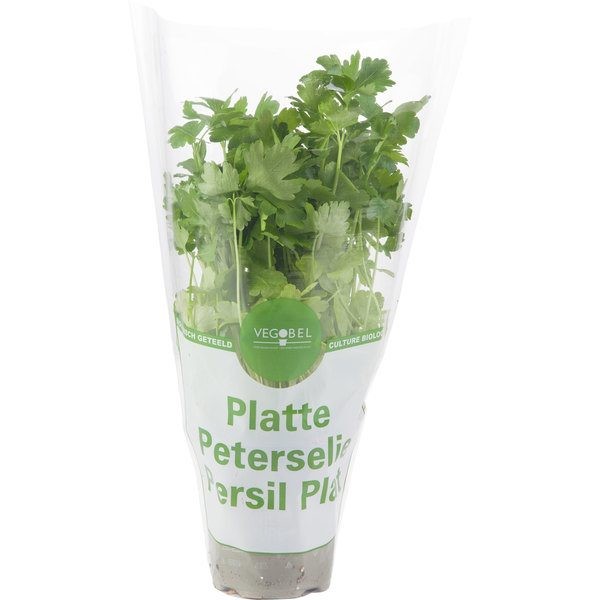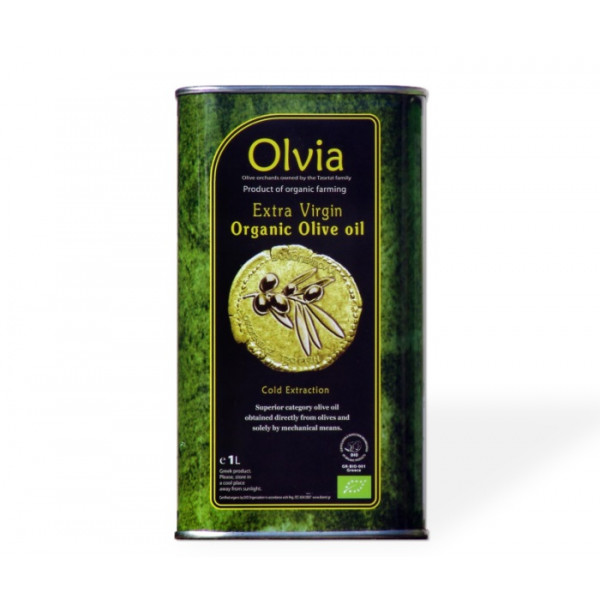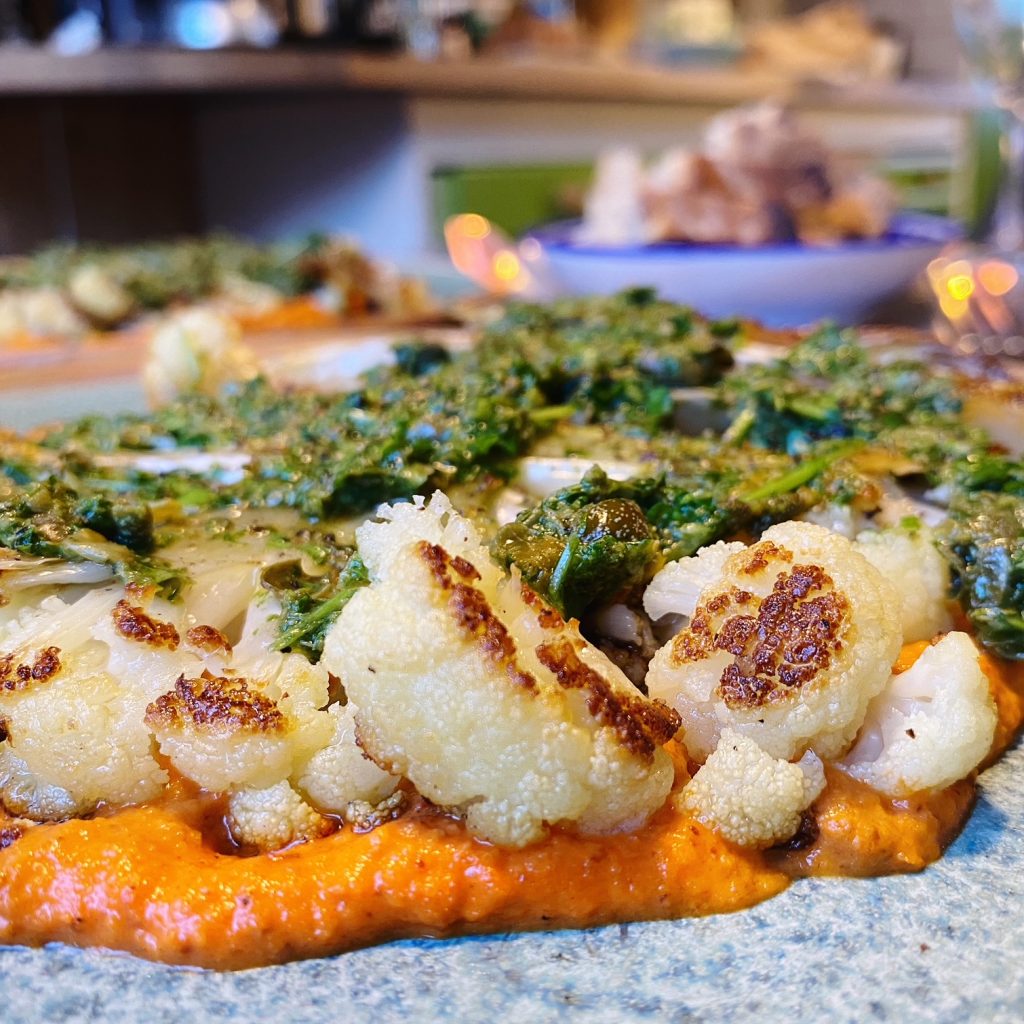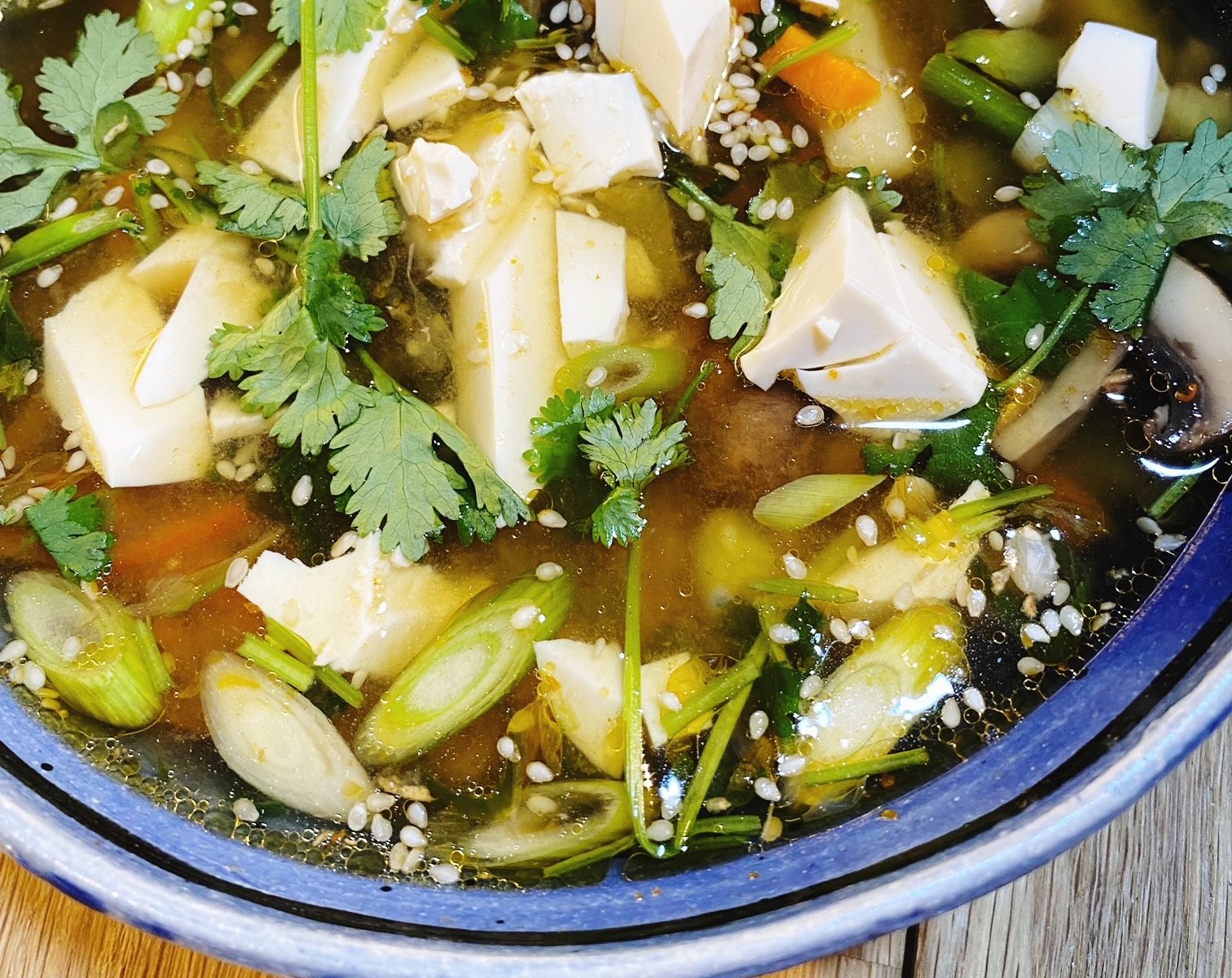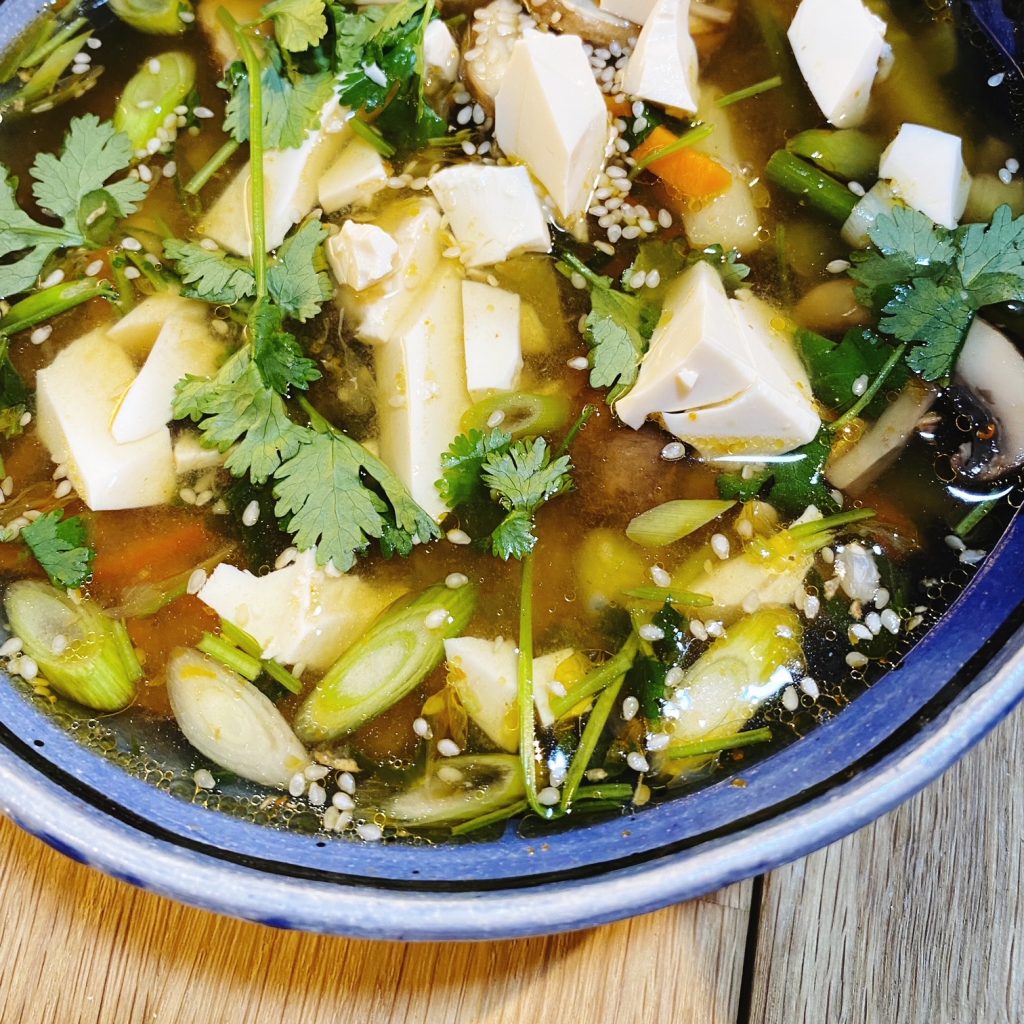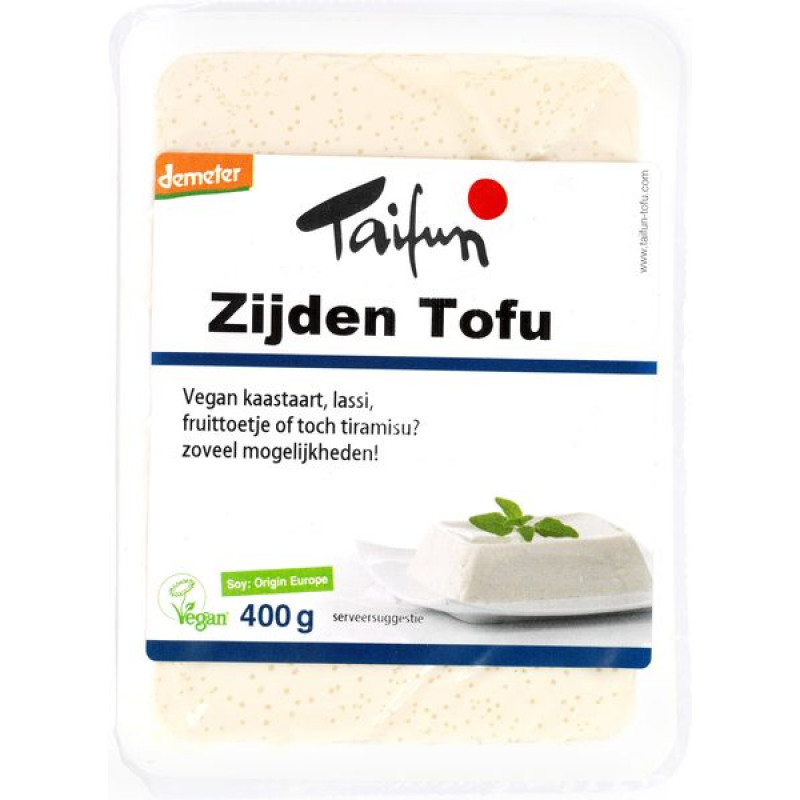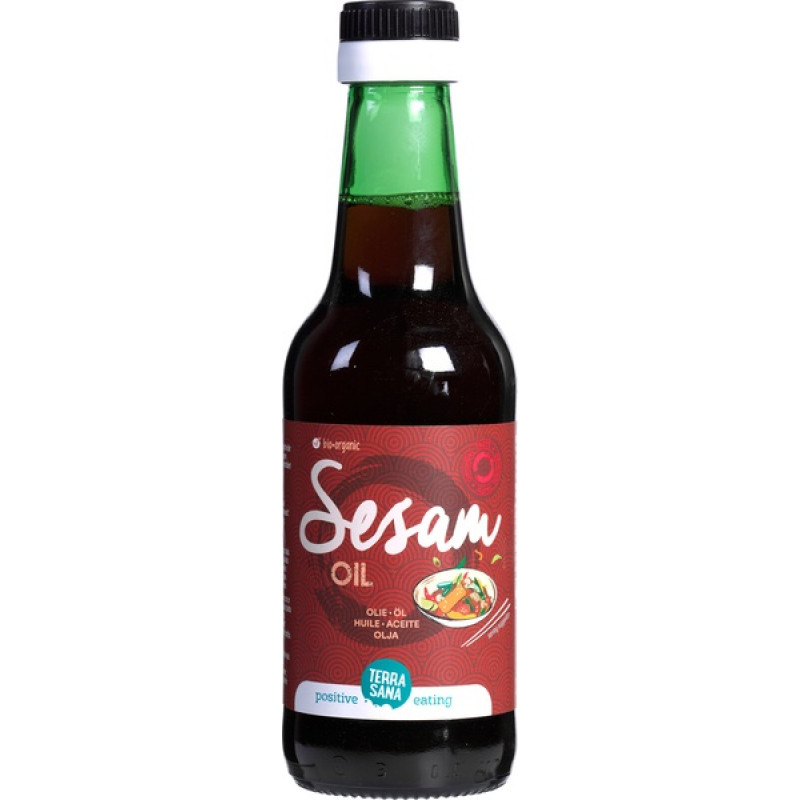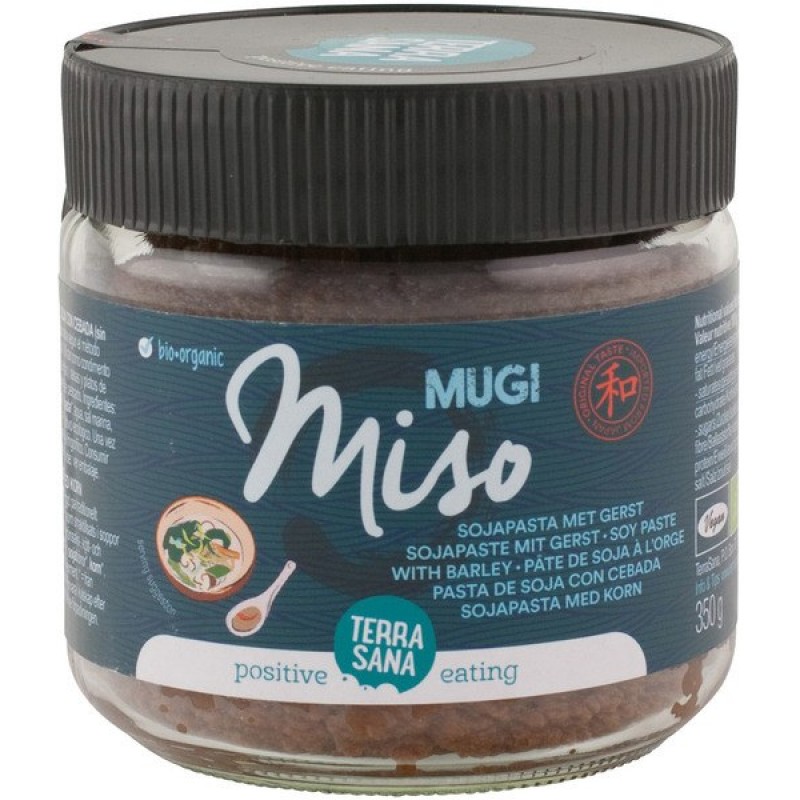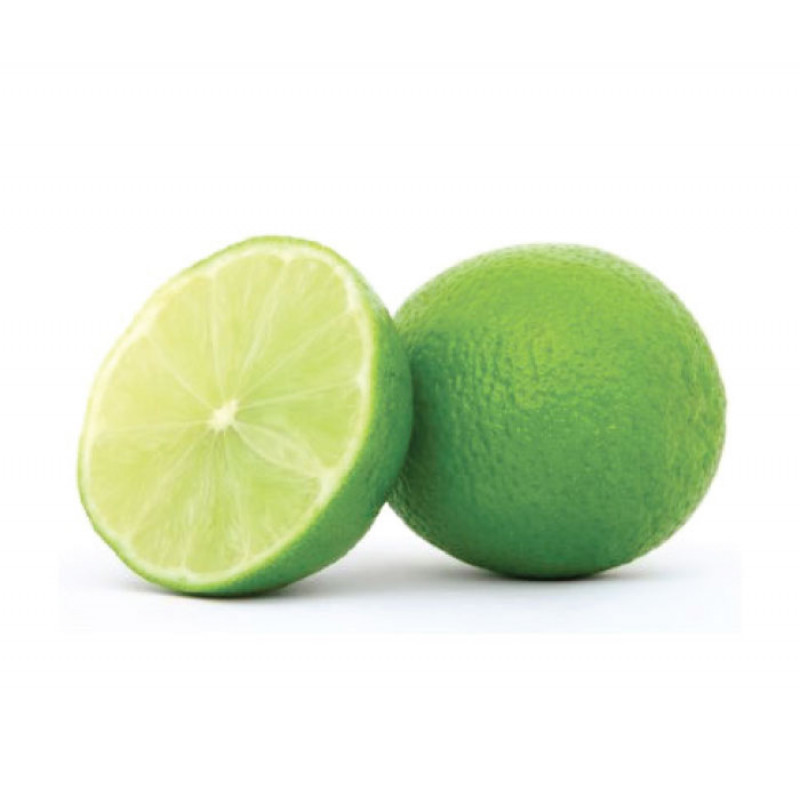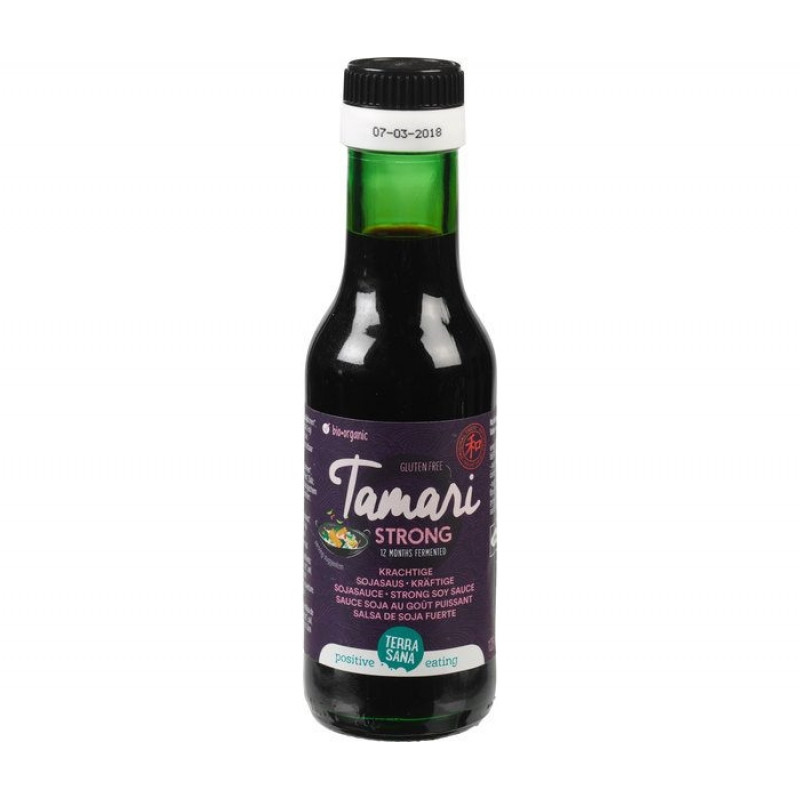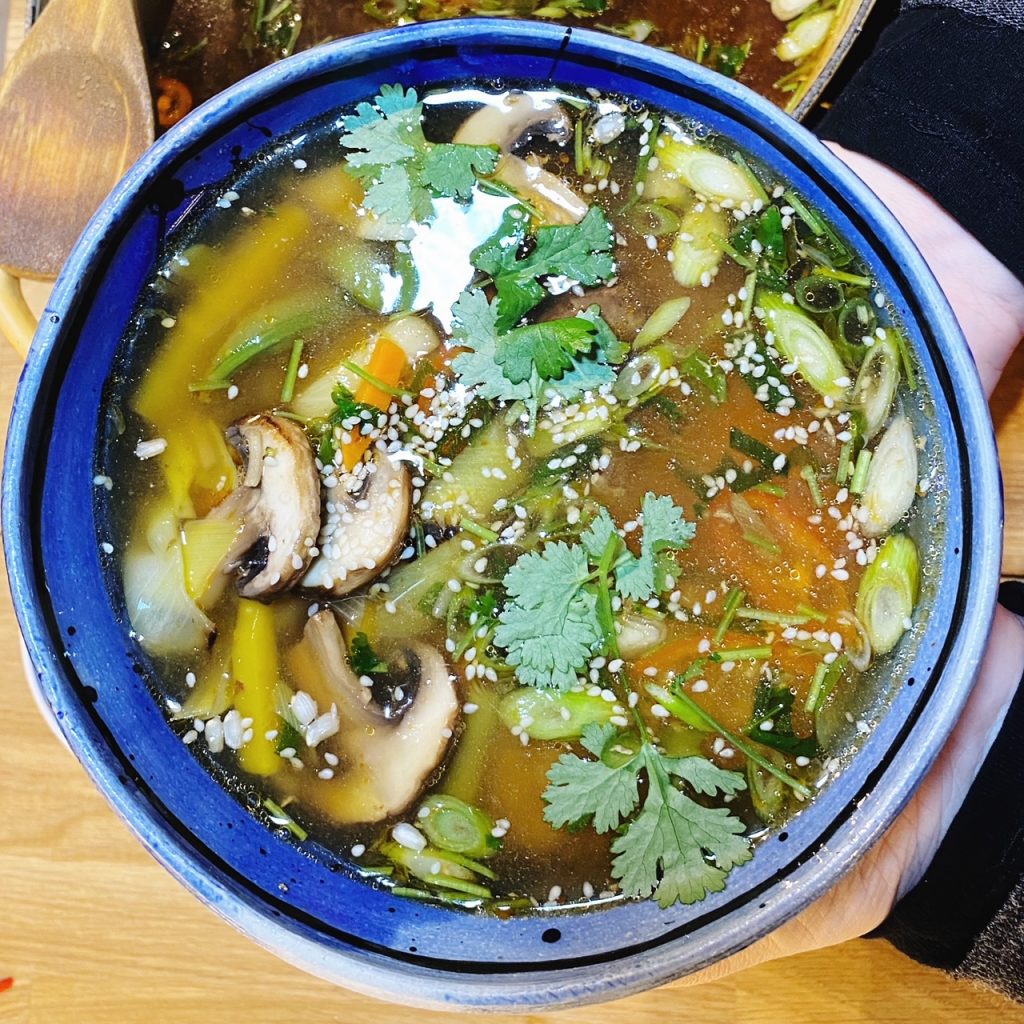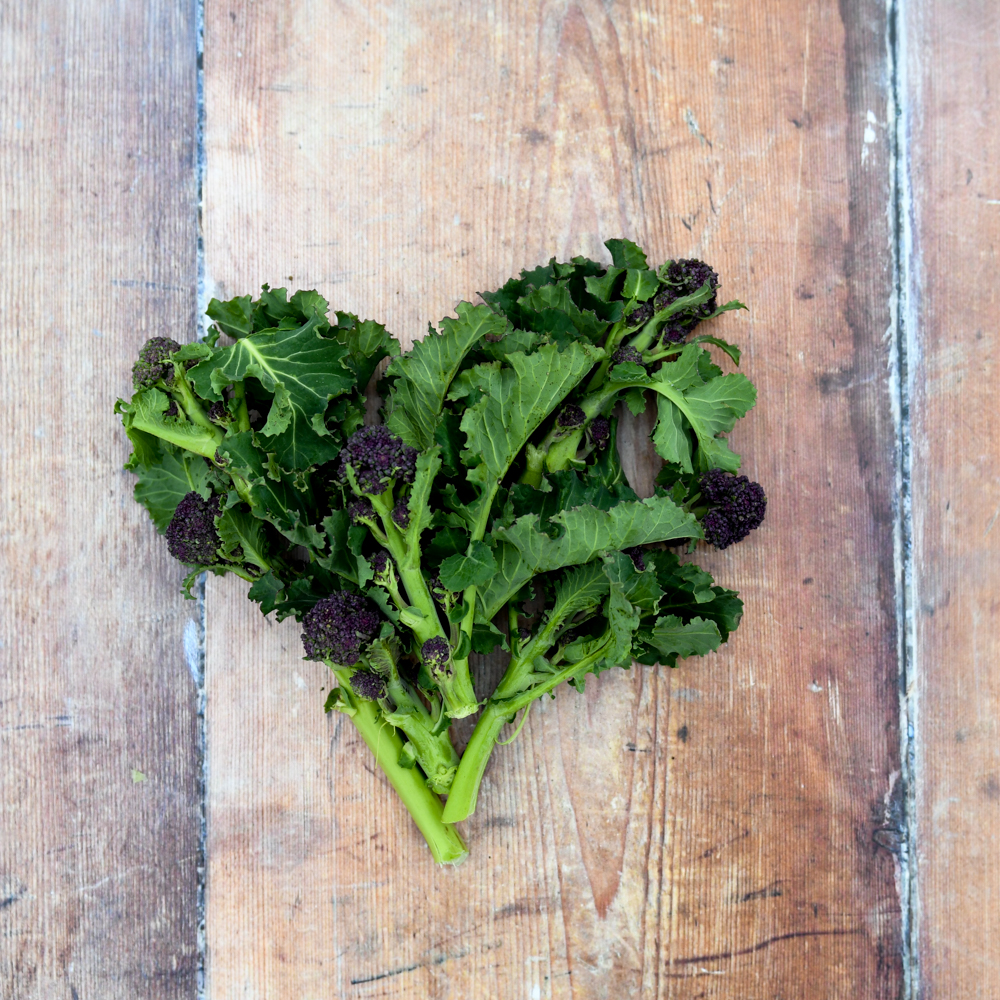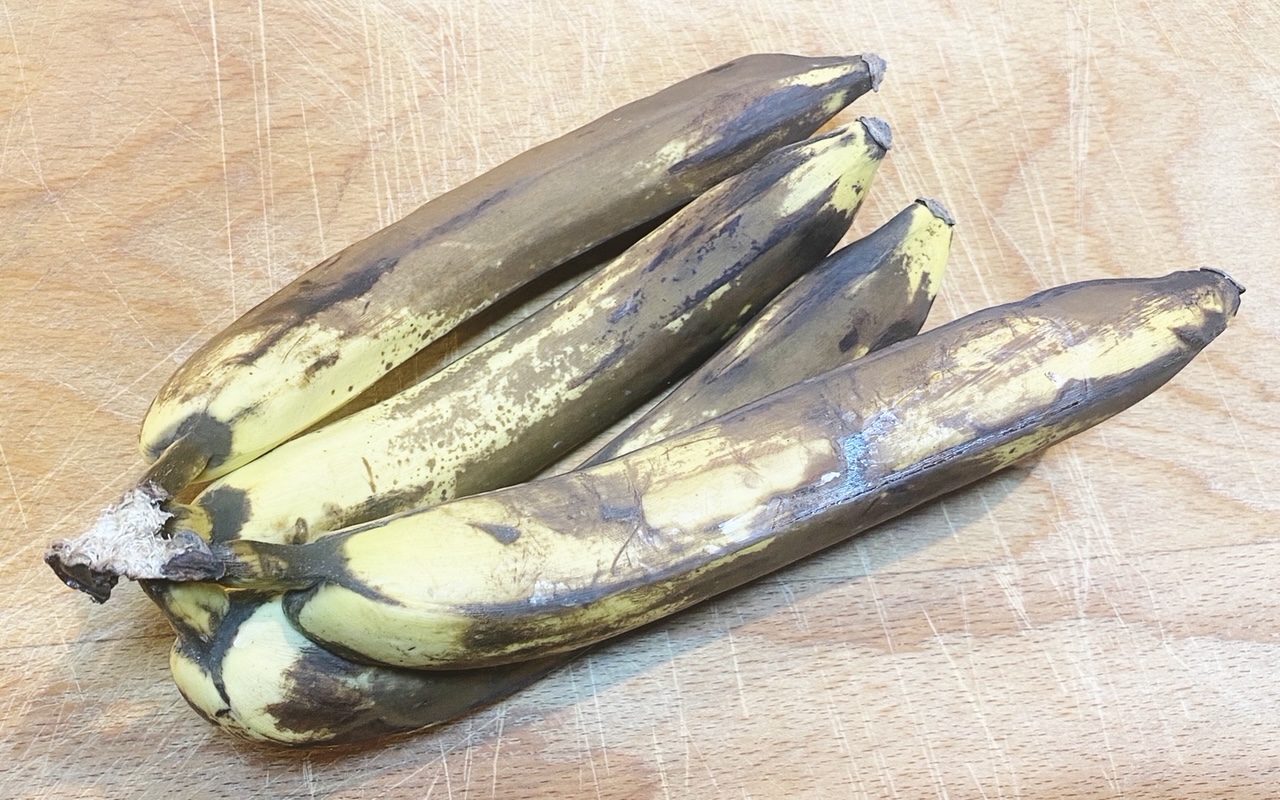
Who knew you could eat the skins of a banana? It’s amazing what we have been conditioned into discarding as not edible isn’t it? The amount of delicious and healthy fruit and vegetable offcuts – skins, leaves, stalks…that we just throw away is actually quite shocking. We could make our weekly food shop go so much further if we re-learn what is edible and what isn’t. Lack of dietary fibre is a big health issue here in the west. It’s so important to eat enough roughage to help your digestive system move, for bowel health, and to balance your blood sugar and lower cholesterol. Dietary fibre is found in fruits, vegetables, wholegrains, nuts, seeds and legumes.
Eating banana skins is not just about increasing your fibre intake. Banana skins are rich in potassium (amazing for your heart health), magnesium (helps your muscles and nerves work properly, maintains protein, bone and DNA, levels blood sugar and pressure), B6 (which improves your sleep) and B12 (keeps your blood and nerve cells happy, helps make DNA), Vitamin A (great for eyesight), antioxidants (lowers cancer risk) and more!
So here are a couple of ways to cook banana skins. Always choose organic to avoid nasty pesticides/herbicides and give your bananas a good rinse. Riper banana skins are softer and sweeter. If you don’t fancy making a meal out of banana skins, you can always blend some into your smoothie or next batch of banana bread too.
Liz x
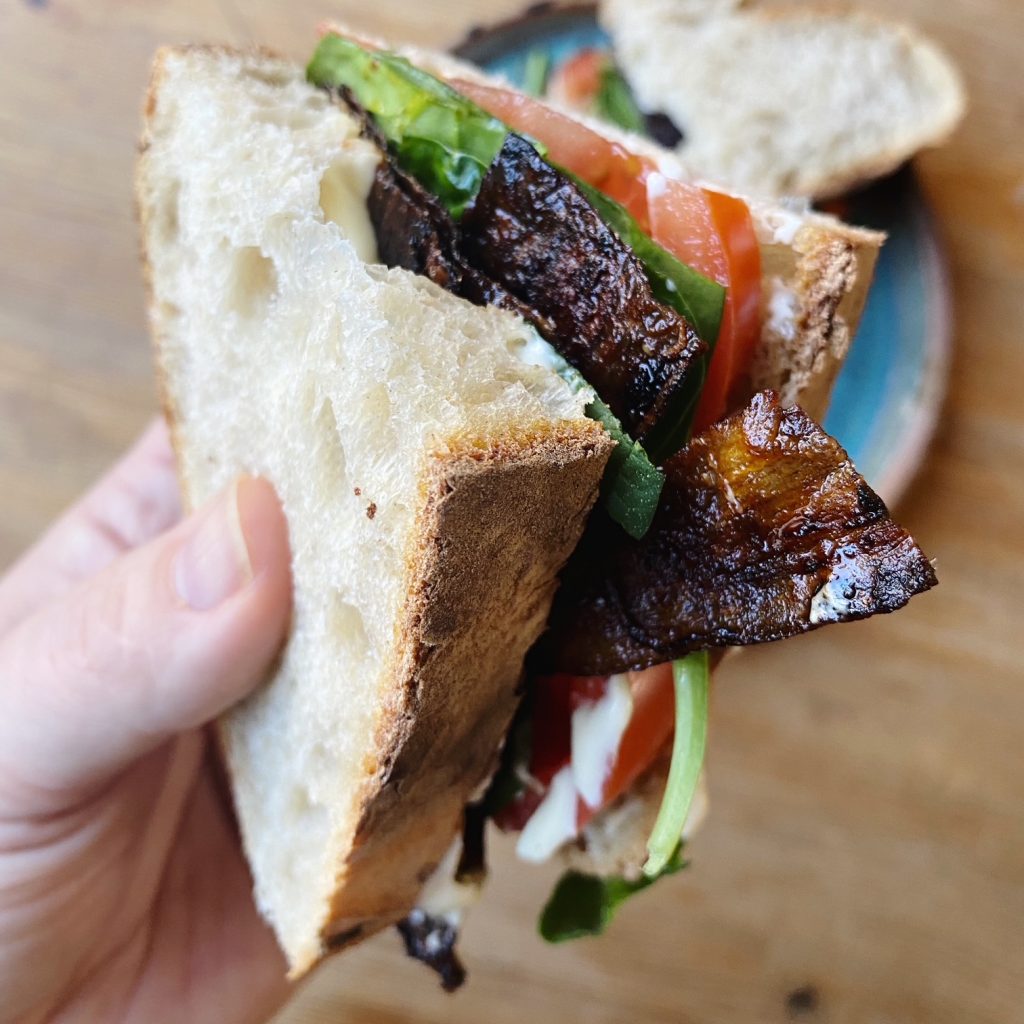
Save Your Banana Skin ‘Bacon’
Rescue your ripe banana skins from heading to the bin by putting them in a box in the fridge to add to smoothies – or make this vegan bacon. Yes, this recipe is a bit of a gimmick, but it is surprisingly delicious. It’s all about the smokey bacon marinade of course (which you can use to marinade strips of aubergine, mushrooms, courgette, carrots etc to make whatever plant-based bacon you desire). Banana skins bring a light banana flavour to the party along with a deliciously chewy texture. Definitely worth a go!

Ingredients
- 1 tbsp olive oil
- 2 tbsp soy sauce
- 1 tbsp sugar or maple syrup
- 1 tsp garlic granules/powder
- 1 tsp nutritional yeast flakes
- 1 tbsp smoked paprika
- 3-4 ripe banana skins, washed
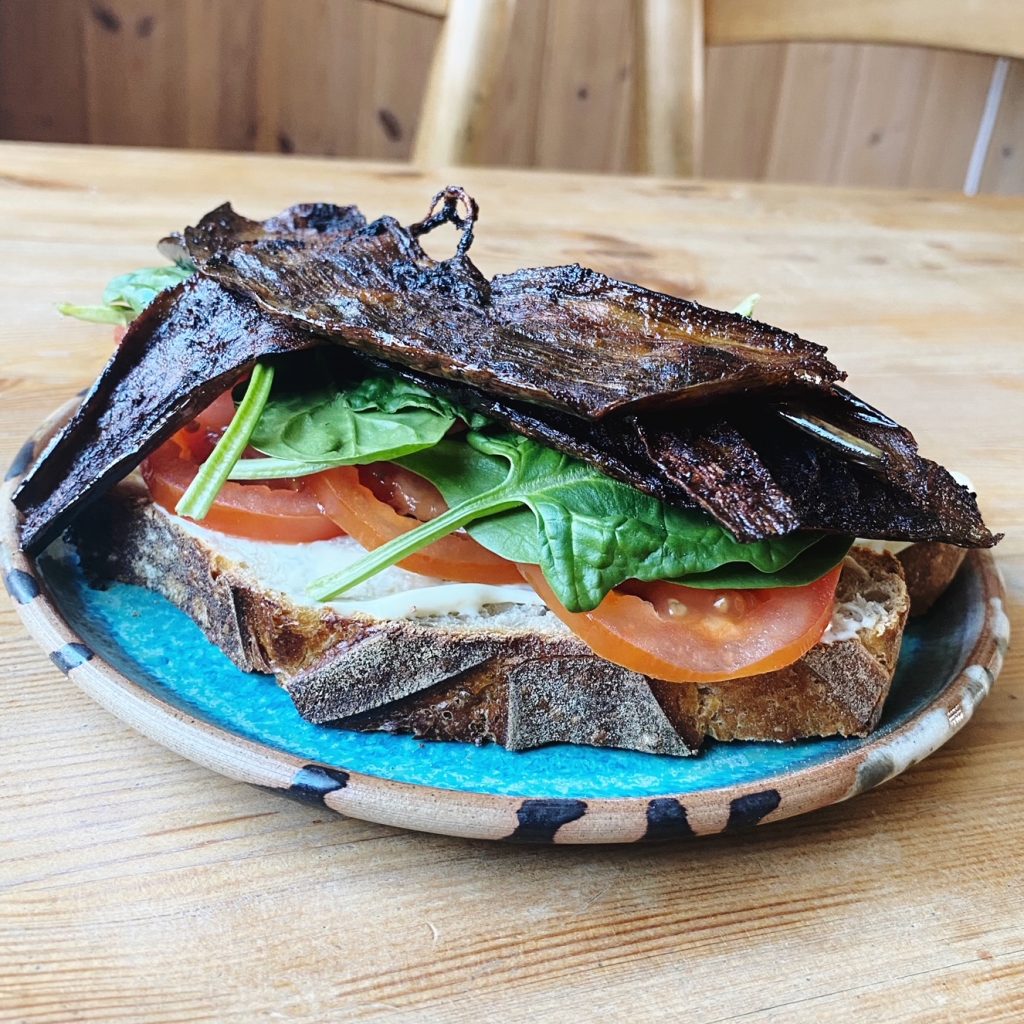
Method
- Mix all the ingredients (except for the banana skins) in a container that will hold 3 or 4 banana skins. I use a sandwich box with a lid.
- Chop the tough ends off of 3-4 banana skins and tear them into strips (a banana skin should naturally tear into 3 or 4 strips). Use a spoon to scrape off the phloem bundles – that’s the name for the soft, stringy bits of banana stuck to the inside of the skins. These can be added to smoothies or banana bread.
- Place the scraped banana skins into the marinade and mix well ensuring each piece is coated in the marinade. Leave to soak up the flavour for at least 20 minutes. You can even prepare this the night before and pop in the fridge, then cook the bacon for breakfast in the morning.
- Fry the strips of banana skin with a little oil in a medium-high frying pan on both sides until sizzling and crispy. Enjoy as a side of your cooked breakfast plate or in a sandwich. Crumble over pasta or eat wherever you would like a sweet and salty, smokey bacon-like flavour.
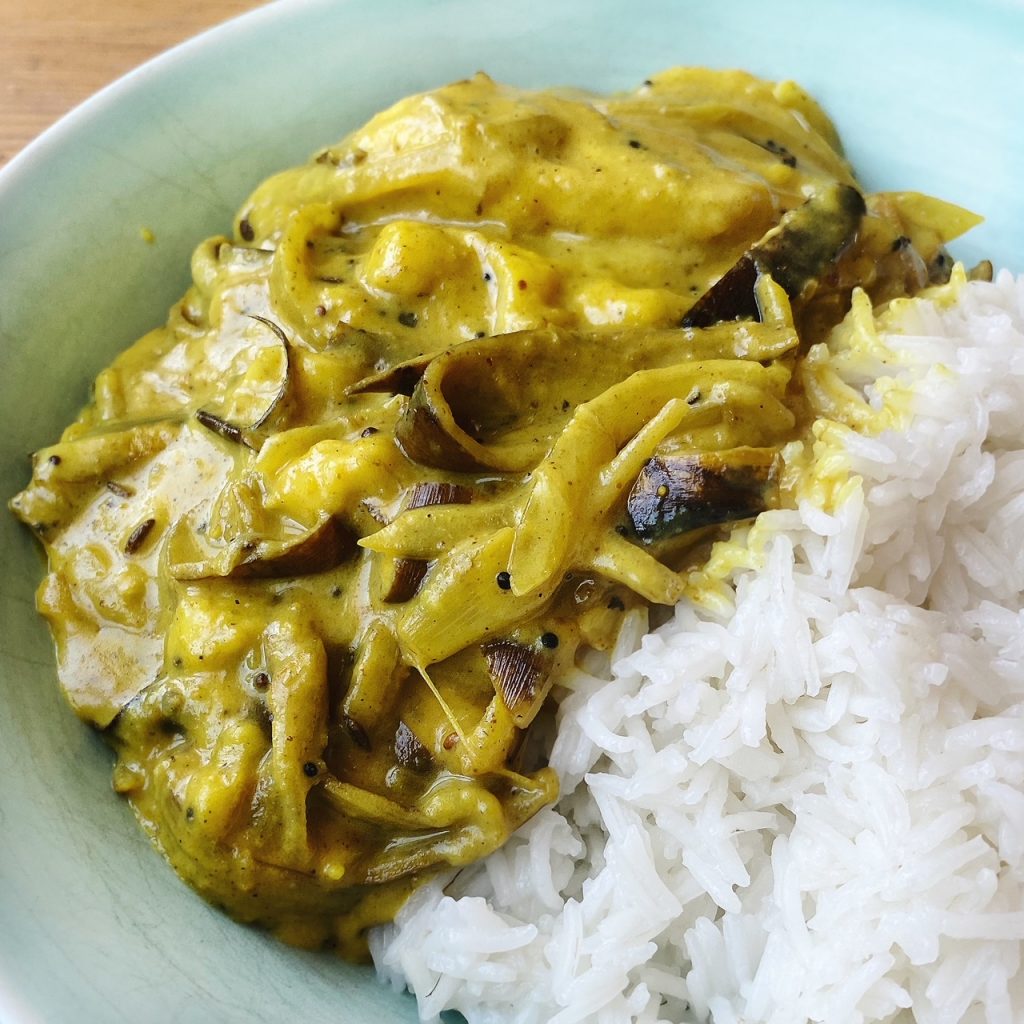
Whole Banana & Coconut Curry
You need to really like banana to like this curry. It’s sweet, creamy, mild and absolutely delicious! I like it just as it is so I can really enjoy the flavour and texture of the banana skin and flesh with some simple rice, chilli flakes and coriander. But I often bulk it out with roasted cauliflower or squash or a drained tin of chickpeas too.
Ingredients (per person)
- 1 tsp vegetable oil
- 1 tsp cumin seeds
- 1 tsp brown mustard seeds
- a pinch of fresh curry leaves will take this curry to the next level
- 1/2 a white onion, peeled and thinly sliced
- 2 cloves of garlic, peeled and sliced
- 1 very ripe banana
- 1 tsp ground/grated ginger
- 1 tsp ground/grated turmeric
- 1 tsp curry powder
- 1/2 tsp salt – or to taste
- black pepper to taste
- 1/4 tin coconut milk
- rice, fresh coriander, chilli flakes, lime wedges to serve
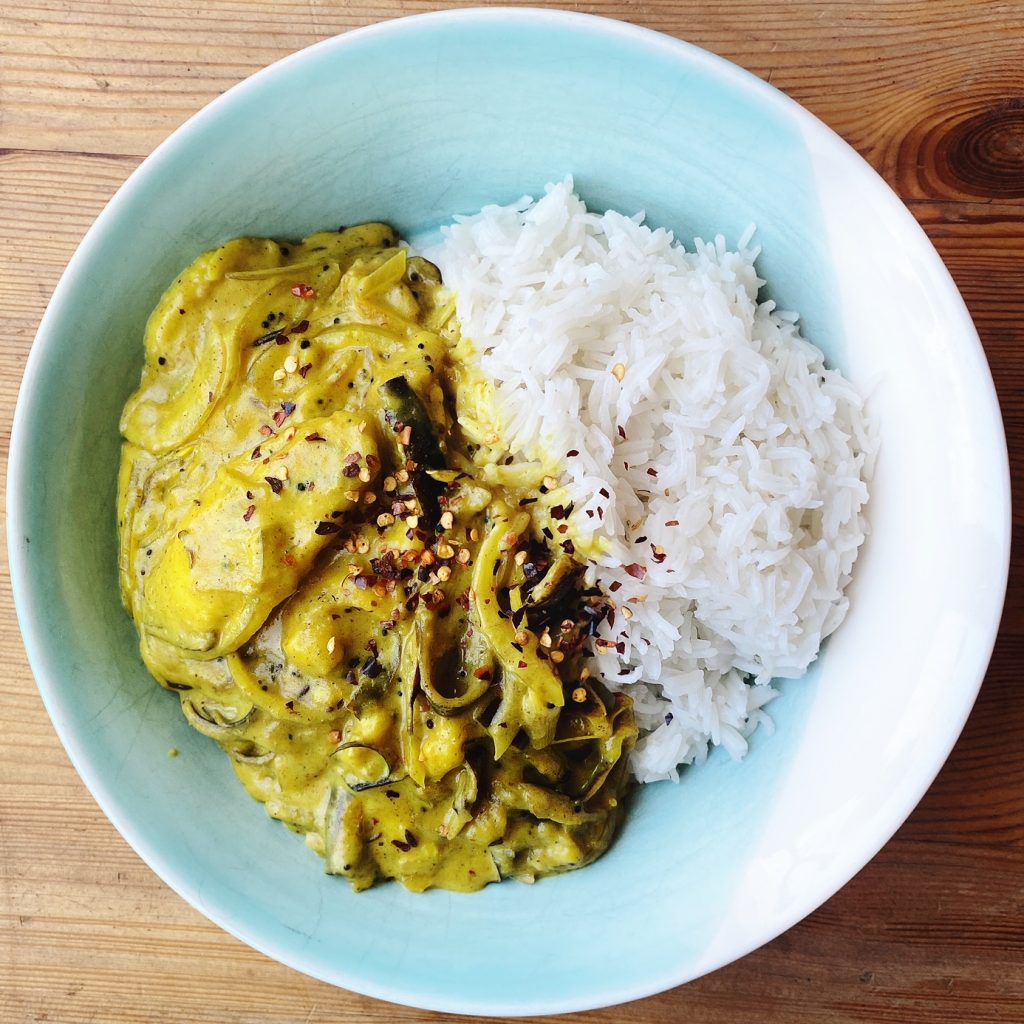
Method
- Get your rice on to cook then heat up a pan with your vegetable oil to medium-high. Add the cumin and mustard seeds and cook them until they start to crackle and pop. They should get very fragrant. If you can get fresh curry leaves where you are, add a pinch of them now too and swoon at the gorgeous fragrance.
- Then add the sliced onion with a pinch of salt and sauté until soft and starting to turn golden brown. Add the sliced garlic and stir for a couple of minutes.
- While the onions and garlic cook, slice the tough ends off your banana and peel it. Cut the skin widthways into three roughly pinky-finger length chunks, then cut those chunks lengthways into nice thin strips. Add the banana skin to the pan and stir.
- Add the turmeric, ginger and curry powder and stir well. The curry will be quite dry now so add a splash or two of water and cook for around 5 minutes, stirring regularly and adding more water as needed until the banana skins have softened.
- Slice the banana flesh into thin, diagonal ovals and add them to the pan with the salt and pepper. Stir gently for a couple of minutes to warm up the banana, add another splash of water if needed.
- Add the coconut milk and turn the heat down to simmer. Taste the curry and adjust the seasoning if needed with more salt or a squeeze of lime if acidity is called for.
- Serve piled next to rice. Add a sprinkle of fresh coriander and some chilli flakes/slices for heat if you wish and enjoy!
